Dan Jones
Shared posts
Choosing the Right Markdown Parser
The following is a guest post by Ray Villalobos. Ray is going to explore many of the different varietals of Markdown. All of them offer features beyond what the original Markdown can do, but they offer different features amongst themselves. If you're choosing a version to use (or a version you're offering to users on your web product), it pays to know what you are getting into, as it's difficult to switch once you've chosen and there is content out there that depends on those features. Ray, who has a course on Markdown, is going to share which versions have which features to help you make an informed choice.
Markdown has changed the way professionals in many fields write. The language uses simple text with minimal markup and can convert it to a growing number of formats. However, not all markdown parsers are created equally. Because the original spec hasn't evolved with the times, alternate versions like Multi-Markdown, GFM (Github Flavored Markdown), Markdown Extra and others have expanded the language.
The original parser was written in Perl. The core features include parsing block elements (such as paragraphs, line breaks, headers, blockquotes, lists, code blocks and horizontal rules) and span elements (links, emphasis, code snippets and images). Since then, the language hasn't been expanded by its creator John Gruber, so a number of additions and implementations have surfaced with different parsers adding support for different implementations as they see fit, or interpreting how certain elements are parsed.

Choosing a version
There's a lot to consider when thinking about implementing Markdown into a project, including the language you'll be developing with as well as the features you want to support. The original implementation was written in Perl, but that's not a practical option for every project. There are implementations in most popular languages including: PHP, Ruby and JavaScript. Which language you choose will have repercussions as to which features you'll be able to support and what libraries will be available. Let's take a look at some of the options:
| Language | Library (download project) |
|---|---|
| Perl | Original version |
| JavaScript | CommonMark, Marked, Markdown-it, Remarkable, Showdown |
| Ruby | Github Flavored Markup, Kramdown, Maruku, Redcarpet |
| PHP | Cebe Markdown, Ciconia, Parsedown, PHP Markdown Extended |
| Python | Python Markdown |
There are additional implementations in many other languages, just in case you're looking to implement Markdown in other languages.
Core features
The core markdown language supports a number of default features that are quite useful. Although different implementations support a range of extended features, they should all support at least the following core syntax: Inline HTML, Automatic paragraphs, headers, blockquotes, lists, code blocks, horizontal rules, links, emphasis, inline code and images.
Noteworthy Extensions
With the many versions of markdown available, a few have had a substantial impact on other versions. So much so that you'll often see them quoted as part of other versions. For example, libraries will mention support of CommonMark, GFM or Multi-Markdown. Let's take a look at what those mean.
GFM
One of the reason Markdown became so popular with developers is because Github, the open source sharing platform accepted and extended the language with a version called Github Flavored Markup (GFM) to include Fenced Codeblocks, URL Autolinking, Strikethrough, Tables and even the ability to create to-dos within repos. So, when a version mentions support of GFM, look for those extensions to be implemented.
Supports: Fenced Codeblocks, Syntax Highlighting, Tables, URL AutoLinking, To-dos, Strikethrough.
CommonMark
Recently there has been a move to standardize markdown. A group of Markdown developers joined to create a version, tests and documentation for the language that resulted in a more robust specification for the language called CommonMark. At this time, the implementation added fenced codeblocks, but mostly detailed the specifics of how certain features were to be implemented for consistent output and conversion. A lot more extensions that would bring this more in line with what's available in other languages have been proposed for the future.
This format is relatively new and doesn't support a lot of features, but it is actively being developed and there are plans to add many Multi-Markdown features.
Supports: Fenced Codeblocks, URL AutoLinking
Multi-markdown
The first serious projects that extended the language is Multi-Markdown. It added a number of features to the language that is supported by other versions. It was originally written in Perl, like Markdown, but then moved onto C. So, if you see that a project has Multi-Markdown support, then it probably has most of these features.
Supports: Fenced Codeblocks, Syntax Highlighting, Tables, Metadata, Fragments/Cross References Links, Footnotes, Strikethrough, Definition Lists, Math.
Optional Features
Let's take a look at the features that are available through different implementations.
Fenced Codeblocks
One of the best additions for developers is the ability to easily add code to your markdown. The original implementation automatically considered a block of text as code if it was indented by 4 spaces or a single tab. That's sometimes inconvenient, so several implementations incorporated fenced codeblocks by allowing you to place three tickmarks (`) or in some cases triple tilde (~) characters at the beginning of a block of text to mark it as code:
```
body {
margin: 0;
padding: 0;
color: #222;
background-color: white;
font-family: sans-serif;
font-size: 1.8rem;
line-height: 160%;
font-weight: 400;
}
```Available with:
Cebe Markdown, Ciconia, Github Flavored Markdown, Kramdown, Markdown-it, Marked, Maruku, Multi-Markdown, Parsedown, PHP Markdown Extended, Python Markdown, Redcarpet, Remarkable, Showdown
Syntax Highlighting
Adding code blocks is great but, by default, markdown interpreters will simply wrap the blocks inside <code> and <pre> tags, which makes the text show up as pre-formatted text in a fixed width font. Some implementations can improve on this by allowing you to specify a language next to the tickmarks and may include a parser that automatically lets you choose different color styles and specify which language your code was written so that the colors are more meaningful.
```css
body {
margin: 0;
padding: 0;
color: #222;
background-color: white;
font-family: sans-serif;
font-size: 1.8rem;
line-height: 160%;
font-weight: 400;
}
```Available with:
Ciconia, Github Flavored Markdown, Kramdown*, Marked, Maruku, Multi-Markdown, Parsedown, PHP Markdown Extended, Python Markdown, Redcarpet, Remarkable, Showdown
* Some of this support doesn't come embedded into the parser, but is dependent upon other libraries like highlight.js.
Tables
Writing tables in HTML can be cumbersome. Some versions of markdown can take care of this by letting you add tables with a fairly simple syntax.
Dimensions | Megapixels
---|---
1,920 x 1,080 | 2.1MP
3,264 x 2,448 | 8MP
4,288 x 3,216 | 14MPRenders like this:
| Dimensions | Megapixels |
|---|---|
| 1,920 x 1,080 | 2.1MP |
| 3,264 x 2,448 | 8MP |
| 4,288 x 3,216 | 14MP |
It takes a few minutes to get the hang of building tables like this, but after you do it a few times, you’ll think of using HTML a bit of a hassle. If you need help creating tables, check out this Markdown Tables Generator.
Available with:
Cebe Markdown, Ciconia, Github Flavored Markdown, Kramdown, Markdown-it, Marked, Maruku, Multi-Markdown, Parsedown, PHP Markdown Extended, Python Markdown, Redcarpet, Remarkable, Showdown
Metadata
Some extensions will let you add meta data that you can use to add information that your app can parse like perhaps choosing a template or setting the page title. Some use the Multi-Markdown structure for this metadata, and others like the Jekyll parser use YAML as the format, which lets you express complex data within this metadata section. This can be a really useful handy feature for app developers.
---
Title: SVG Article
Author: Ray Villalobos
Date: January 6, 2016
heroimage: "http://i.imgur.com/rBX9z0k.png"
tags:
- data visualization
- bitmap
- raster graphics
- navigation
---Available with:
Markdown-it, Maruku, Multi-Markdown, PHP Markdown Extended, Python Markdown, Redcarpet, Remarkable, Showdown
URL Autolinking
This fairly simple extension allows URLs that naturally occur within your text to convert to links via the parser. This is really convenient and useful in an implementation like GFM, where making URLs clickable without additional work makes for building documentation that's easier to write.
Available with:
Cebe Markdown, Ciconia, CommonMark, Github Flavored Markdown, Kramdown, Markdown-it, Marked, Maruku, Multi-Markdown, Parsedown, PHP Markdown Extended, Python Markdown, Redcarpet, Remarkable, Showdown
Fragments/Cross Reference Links
With HTML, you can easily create references to within your document by using a hash mark in your anchor tag with the ID of an element on a page. Some implementations allow you to create a shortcut for this type of reference. That's specially useful because it allows you quickly cross-reference your own document without having to write a bunch of HTML. This feature is implemented in very different ways, so you really need to be careful to read the documentation for the specific version you'll be using.
You can link to a headline called 'myheadline' in your document using this [My Headline][].
## My Headline
The word 'reference' right next to this will get a link that links via an href to the headline above. The headline, in other words, gets an ID that the link points to.Available with:
Ciconia, Multi-Markdown, Maruku, Multi-Markdown, Parsedown, PHP Markdown Extended, Redcarpet, Showdown
Custom IDs on Headlines
Another useful feature is the ability to have IDs within your headlines so that you can more easily target them through CSS. Some parsers will automatically place IDs on all headlines (specially if they support fragments/cross references), so this feature is not always necessary. However, it's nice that some versions allow you to customize how the parser names the IDs, which is sometimes more convenient than auto naming things.
### Custom IDs {#custom-id}
The headline above, when rendered by the parser, will have a custom ID that you specify in the curly braces.Available with:
Cebe Markdown, Kramdown
Footnotes & Other Link types
Footnotes allow you to create links within your document to references that are placed at the bottom of the markdown page. This is different than normal links, which are placed inline within your content. This allows users to view all of the related links within a document in a single section, which is nice sometimes.
You can find a demo of a site[^Demo] built with PostCSS in our footnotes, or you can checkout the [^Github Repo] for the project.
#### Footnotes
[Demo](http://iviewsource.com/exercises/postcsslayouts)
[Github Repo](https://github.com/planetoftheweb/postcsslayouts)Available with:
Cebe Markdown, Kramdown, Markdown-it, Maruku, Multi-Markdown, Parsedown, PHP Markdown Extended, Python Markdown, Redcarpet, Remarkable, Showdown
**Note**: There are many alternate link methods in parsers like Multi-Markdown. Support for these is very spotty in the individual versions. That means that even though the parser touts 'multi-markdown' compatibility, different parsers will implement different types of link references. This includes things like Citations, auto-generated ids in headlines, the ability to create custom IDs, cross-reference links and others. Some parsers will even invent their own link features.
To-dos
This is a Github Flavored Markdown feature that has caught on in some implementations. It adds to-do list markup so that you can create checkboxes next to content to simulate a to do list.
- [ ] Run `> npm-install` to install the project dependencies
- [X] Install gulp.js via the Mac terminal or Gitbash on a PC `> npm install -g gulp`
- [ ] Run the Gulp command `> gulp`Available with:
Ciconia, Github Flavored Markdown, Markdown-it, Marked, Python Markdown, Redcarpet, Showdown
Strikethrough
If you want to mark text with a Strikethrough, you can use a notation in a lot of versions that wraps the text with the <s> tag. However for a more comprehensive implementation of editor notes, you might want to check out the related format called CriticMarkup.
Available with:
Ciconia, Markdown-it, Marked, Multi-Markdown, Parsedown, Remarkable, Redcarpet, Showdown
Definition Lists
Although definitions lists are not as common as other types of lists, it's a great way of coding certain types of elements in HTML, some implementations add a way to create these in a much simpler way. There are two ways of defining them, depending on the language, using a colon (`:`) or a tilde (`~`), although the implementation with the colons are more common.
ES6/ES2015
: The new version of the popular JavaScript language
TypeScript
~ TypeScript is a language that is a superset of JavaScript that can be compiled through a transpiler to JavaScript that will work with most browsers.Available with:
Kramdown, Markdown-it*, Maruku, Multi-Markdown, PHP Markdown Extended, Python Markdown, Remarkable
* requires an extension
Math
The ability to create mathematical formulas can be useful to some users, so a language for creating them has appeared within some implementations like Multi-Markdown. Although some languages claim to Support in other languages is available, sometimes through an extension.
Available with:
Kramdown*, Maruku, Multi-Markdown, Markdown-it, Python Markdown*
* requires an extension
Oh that sweet I/O
One thing that you have to be careful about is how different versions handle input and output. Just because a version says it supports tables, it doesn't mean that there's a standard way of creating the code for the tables. Some versions will generate HTML that is verbose and some will render minimalist code.
There’s also variations of how things like white space are handled. Some versions will place IDs within each headline and some won’t. This has been one of the concerns that the OpenMark platform tries to address, how to generate consistent output. The best way to figure out how the version you’ve chosen handles this is to use the Babelmark 2 test. Paste some code and it will show you how different parsers take care of the output as well as a preview of what that looks like on a browser.

Choosing the Right Markdown Parser is a post from CSS-Tricks
The 100 Jokes That Shaped Modern Comedy
From the Marx Brothers to <i>The Simpsons</i>, Richard Pryor to Amy Schumer: 100 bits, sketches, and one-liners that changed humor forever.
The oldest joke on record, a Sumerian proverb, was first told all the way back in 1900 B.C. Yes, it was a fart joke: “Something which has never occurred since time immemorial; a young woman did not fart in her husband's lap.” Don’t feel bad if you don’t get it — something was definitely lost in time and translation (you have to imagine it was the Mesopotamian equivalent of “Women be shopping”), but not before the joke helped pave the way for almost 4,000 years of toilet humor. It’s just a shame we’ll never know the name of the Sumerian genius to whom we owe Blazing Saddles. But with the rise of comedy as a commercial art form in the 20th century, and with advances in modern bookkeeping, it’s now much easier to assign credit for innovations in joke-telling, which is exactly what Vulture set out to do with this list of the 100 Jokes That Shaped Modern Comedy.
A few notes on our methodology: We’ve defined “joke” pretty broadly here. Yes, a joke can be a one-liner built from a setup and a punch line, but it can also be an act of physical comedy. Pretending to stick a needle in your eye, or pooping in the street while wearing a wedding dress: both jokes. A joke, as defined by this list, is a discrete moment of comedy, whether from stand-up, a sketch, an album, a movie, or a TV show.
For clarity’s sake, we’ve established certain ground rules for inclusion. First, we decided early on that these jokes needed to be performed and recorded at some point. Second, with apologies to Monty Python, whose influence on contemporary comedy is tremendous and undeniable, we focused only on American humor. Third, we only included one joke per comedian. And fourth, the list doesn't include comedy that we ultimately felt was bad, harmful, or retrograde.
The list was put together by Vulture senior editor Jesse David Fox; New York senior editor Christopher Bonanos; comedians Wayne Federman, Phoebe Robinson, Halle Kiefer, and Rebecca O'Neal; comedy historians Yael Kohen (author of We Killed) and Kliph Nesteroff (author of The Comedians); and journalists Elise Czajkowski, Matthew Love, Katla McGlynn, Ramsey Ess, Dan Reilly, Jenny Jaffe, Lucas Kavner, and The Guardian’s Dave Schilling. (Fox, Bonanos, Keifer, O'Neal, Czajkowski, Love, McGlynn, Ess, Reilly, Jaffe, Kavner, and Schilling wrote the blurbs.)
Without further ado, here are the 100 Jokes That Shaped Modern Comedy. They are listed below in chronological order, complete with video or audio. Use the timeline slider to jump to different eras or specific comedians.
1906 Bert Williams, Alex Rogers, “Nobody”
1913 George L. Thompson, Monroe Silver, Joe Hayman, “Cohen on the Telephone”
1925 Charlie Chaplin, The Gold Rush
1927 Buster Keaton, The General
1929 Burns and Allen, “Lambchops”
1931 Will Rogers, “Bacon, Beans and Limousines”
1932 Laurel and Hardy, Hal Roach, James Parrott, H. M. Walker, The Music Box
1933 The Marx Brothers, Leo McCarey, Duck Soup Mae West, I’m No Angel
1934 Claudette Colbert, Clark Gable, Frank Capra, Robert Riskin, It Happened One Night
1936 Fred Allen, Jack Benny, The Feud
c. 1937 Henny Youngman, ‘Take My Wife … Please.’
1938 Abbott & Costello, Who’s on First
1941 W.C. Fields, Edward F. Cline, Never Give a Sucker an Even Break
1948 Jack Benny, The Jack Benny Program Milton Berle, Texaco Star Theatre
c. 1950 Jean Carroll on Her Husband’s Pride Lucille Ball, Vivian Vance, I Love Lucy
1952 Sid Caesar, Imogene Coca, Your Show of Shows
1953 Mort Sahl, Joe McCarthy Jacket
c. 1956 Redd Foxx, Laff of the Party
1957 Chuck Jones, Mel Blanc, Arthur Q. Bryan, Looney Tunes
1959 Billy Wilder, Joe E. Brown, Jack Lemmon, Some Like It Hot Nichols and May, Improvisations to Music
1960 Bob Newhart, The Button-Down Mind of Bob Newhart
1961 Dick Gregory, In Living Black & White Lenny Bruce, American
1962 Vaughn Meader, The First Family
c. 1963 Steve Allen, The Steve Allen Show
1964 Stanley Kubrick, Peter Sellers, Dr. Strangelove or: How I Learned to Stop Worrying and Love the Bomb Jonathan Winters, The Tonight Show
c. 1964 Moms Mabley, The Hip Cucko
1965 Tom Lehrer, The Vatican Rag Johnny Carson, Ed Ames, The Tonight Show
1967 Don Rickles, The Dean Martin Show
1968 Bob Hope, the Academy Awards Mel Brooks, The Producers
1969 Phyllis Diller, The Ed Sullivan Show
1970 Mary Tyler Moore, Ed Asner, James L. Brooks, Allan Burns, The Mary Tyler Moore Show
1971 Lily Tomlin, Rowan & Martin's Laugh-In Cheech and Chong, Cheech & Chong David Brenner, The Tonight Show
c. 1972 Rodney Dangerfield, ‘I Get No Respect.’
1972 Norman Lear, Carroll O'Connor, Sammy Davis Jr., Bill Dana, All in the Family
1973 Albert Brooks, Comedy Minus One
1975 Paul Mooney, Chevy Chase, Richard Pryor, Saturday Night Live
1976 Michael O’Donoghue, Saturday Night Live Carol Burnett, Harvey Korman, Tim Conway, Vicki Lawrence, The Carol Burnett Show Elayne Boosler on Male Sexual Hypocrisy
1977 Woody Allen, Marshall Brickman, Annie Hall George Carlin, George Carlin at USC Steve Martin, Let's Get Small
1979 Richard Pryor, Richard Pryor: Live in Concert
1980 Leslie Nielsen, Robert Hays, Jim Abrahams, David Zucker, Jerry Zucker, Airplane! Bill Murray, Harold Ramis, Brian Doyle-Murray, Douglas Kenney, Caddyshack
1982 Robin Williams, An Evening With Robin Williams
1983 Bill Cosby, Himself Andy Kaufman, David Letterman, Late Night With David Letterman
1984 Christopher Guest, Rob Reiner, Michael McKean, Harry Shearer, This Is Spinal Tap
1985 Steven Wright, I Have a Pony Whoopi Goldberg, Direct From Broadway
1986 Joan Rivers, Johnny Carson, The Tonight Show
1988 Roseanne Barr, John Goodman, Roseanne Eddie Murphy, Arsenio Hall, John Landis, Clint Smith, Coming to America
1989 Meg Ryan, Billy Crystal, Nora Ephron, Rob Reiner, Estelle Reiner, When Harry Met Sally...
1990 Paula Poundstone, Cats, Cops and Stuff Matt Groening, James L. Brooks, Sam Simon, Jay Kogen, Wallace Wolodarsky, Dan Castellaneta, The Simpsons
1992 Kim Wayans, In Living Color Jerry Seinfeld, Jason Alexander, Larry David, Seinfeld Bernie Mac, Def Comedy Jam
1993 Jeff Foxworthy, You Might Be a Redneck If ... Bill Hicks, Revelations
1994 Jim Carrey,Tom Shadyac, Jack Bernstein, Ace Ventura: Pet Detective Margaret Cho, HBO Comedy Half-Hour
1995 Janeane Garofalo, HBO Comedy Half-Hour Chris Tucker, Ice Cube, F. Gary Gray, DJ Pooh, Friday
1996 Chris Rock, Bring the Pain
1998 Garry Shandling, David Duchovny, The Larry Sanders Show David Cross, Bob Odenkirk, Jay Johnston, Jill Talley, Mr. Show With Bob and David Sarah Jessica Parker, Kim Cattrall, Kristin Davis, Cynthia Nixon, Darren Star, Michael Patrick King, Sex and the City The Farrelly Brothers, Cameron Diaz, Ben Stiller, There's Something About Mary
2001 Gilbert Gottfried, The Friars Club Roast of Hugh Hefner
2002 Dave Willis, Matt Maiellaro, Aqua Teen Hunger Force
2003 Dave Chappelle, Neal Brennan, Chappelle's Show Jon Stewart, The Daily Show
2004 Will Ferrell, Adam McKay, Anchorman: The Legend of Ron Burgundy
2005 Steve Carell, Judd Apatow, Miki Mia, Seth Rogen, Romany Malco, and Paul Rudd, The 40-Year-Old Virgin Sarah Silverman, Jesus Is Magic Andy Samberg, Akiva Schaffer, Jorma Taccone, Chris Parnell, Saturday Night Live
2006 Stephen Colbert, White House Correspondents’ Dinner
2007 Louis C.K., Shameless
2010 Marc Maron, Robin Williams, “WTF”
2011 Kristen Wiig, Melissa McCarthy, Maya Rudolph, Jessica St. Clair, Ellie Kemper, Wendi McLendon-Covey, Annie Mumolo, Paul Feig, Judd Apatow, Bridesmaids
2012 Lena Dunham, Girls Tig Notaro, Live
2013 Maria Bamford, Ask Me About My New God! Tina Fey, Amy Poehler, the 70th Golden Globe Awards
2014 Hannibal Buress on Bill Cosby
2015 Ellen DeGeneres, Jimmy Fallon, Justin Timberlake, The Tonight Show Amy Schumer, Jessi Klein, Daniel Powell, Ryan McFaul, Inside Amy Schumer
I ain’t never got nothin’ from nobody, no time /
And until I get somethin’ from somebody, sometime /
I’ll never do nothin’ for nobody, no time”
Bert Williams was the most popular black comedic performer in America at the turn of the 20th century. But his celebrity grew tremendously when he put the songs from his stage show Abyssinia to disc and cylinder. That record included the piece he was best known for, “Nobody.” It’s an upbeat tune whose buoyant arrangement runs perpendicular to its melancholy message of isolation and disappointment, a device that’s since become ubiquitous. The idea at the center of “Nobody” — laughing at the self-deprecation of an unfortunate schlemiel — was what fueled its tremendous success. And having a black man as the song’s tragic protagonist added to its novelty and ultimate comedic longevity, spawning a comic genre where vulnerability and ennui weren’t taboo, but welcome subjects. Released at a time when cylinder recordings were at their apex, Williams became widely known for the song, and he was forced to sing it at essentially every appearance he made, for the rest of his life.
Though it began as a stage routine, "Cohen on the Telephone" is noteworthy for embracing two emerging technologies: the telephone and the phonograph. Developed in England by Joe Hayman, the definitive Jewish vaudeville monologue became bigger than any one comedian as it grew into a sensation stateside when American comedians like Barney Bernard, George L. Thompson, and most notably Monroe Silver took on the character of Cohen and recorded covers of the routine. Built on a classic misunderstanding-an-accent premise, it popularized the comedic device of hearing one half of a phone conversation. It was an undeniable influence on comedy legends Shelley Berman and Bob Newhart.
When The Gold Rush debuted in theaters, Charlie Chaplin was already the biggest star in pictures, but this film, which Variety called “the greatest and most elaborate comedy ever filmed,” cemented his place in the industry. Legend has it that this sequence, in which Chaplin’s character dreams about entertaining Georgia, the dance-hall girl, with a couple of forks and dinner rolls charmed audiences so much that in some cases they shut down the screening and made the projectionist respool the film so they could watch it again. This bit was something different for comedy at the time. It wasn’t just another cheap laugh; it showed that you could create a hilarious sequence that also propelled the plot forward. Because this scene was so joyful, it makes reality all the more depressing when the Tramp gets stood up for his dinner date. By being among the first on the silver screen to add a little tragedy to his comedy, Chaplin raised the bar for the art of jokes.
Athletic is one of those words that gets thrown around a lot when talking about silent films, but Keaton’s really deserve it: He was highly agile, performing all his physical stunts — many of them genuinely dangerous — without cuts, often in one take. The resultant films are true action comedies, precursors to The Blues Brothers or the movies of Jackie Chan. They are also, partly because of his filmmaking ambition and partly because he was successful enough to justify decent budgets, simply bigger and better-looking than most silent films. Whereas Chaplin made intimate poetic miniatures that are admirable but can sometimes cloy, Keaton made broad, bright murals that do not require much adjustment of your mind-set. The General still works as a movie comedy, and it’s going on 90 years old.
Many early-20th-century vaudeville stars left the stage to help power the burgeoning media of radio and TV, but few were bigger or brighter than George Burns and Gracie Allen. Their signature routine, “Lampchops,” carries with it the true vaudevillian spirit in that it joyfully delivers a little bit of everything: Wit, wordplay, bits of physical business, and a diverting ditty about love, complete with soft shoe. In this eight-minute version recorded as a Vitaphone short, the savvy and dryly sarcastic Burns sidles up to the guileless Allen, who floats on her own cloud while defending her smarts and the reason why she’s more than one woman (“My mother has a picture of me when I was 2”). In addition to encapsulating the duo’s deceptively easy chemistry, “Lambchops” makes abundantly clear why the plucky Allen was a yardstick by which future “dizzy” dames — e.g. Chrissy from Three’s Company or Phoebe from Friends — would be measured.
When Jon Stewart was hosting The Daily Show, there were many times when you could feel Stewart was truly bothered by the social injustice or the bonehead media figure he was talking about, and even though Stewart was speaking from the heart, he could still make you laugh. That was what Will Rogers pioneered in the 1930s. With a down-home, backwoods charm, Rogers became a national figure by discussing the government and his humorous, logical approach to what was wrong with it. In the midst of the Great Depression, Hoover introduced a plan designed to encourage local groups to help with unemployment, and he asked Rogers to appear on the radio to help promote this plan. What he got were these jokes. Every generation needs a Colbert to present the truth in an entertaining way, and Will Rogers was one of the first we had.
Laurel and Hardy are hired to deliver a piano to a house in Los Angeles, and discover on their arrival that the door is at the top of a very steep, very narrow flight of steps. That’s it. The bare-bones premise allows it to become a pure physical-comedy experiment: How many possible variations can they ring on “Piano goes partway up; piano goes back down”? It’s like a Bach fugue, with a theme and variations and then variations on the variations, although Bach’s keyboard ended up in better shape than this battered instrument does.
We got guns /
All God’s chillun got guns”
There are a lot of different ways to express how you’re feeling about the state of the world. The Marx Brothers used insanity. In Duck Soup, Groucho is appointed the leader of the small country of Freedonia, but when the neighboring country of Sylvania attempts to annex it, Freedonia goes to war. The final ten minutes of the movie begin with the song “The Country’s Going to War,” in which the people of Freedonia excitedly sing about the coming conflict, but it slowly devolves into a minstrel show in which the brothers sing “All God’s Chillun Got Guns.” The final battle is a rapid-fire attack of jokes, similar to the Tommy gun Groucho uses to accidentally shoot his own soldiers. This section of Duck Soup appears briefly in Woody Allen’s Hannah and Her Sisters, when Allen’s character, in the midst of an existential crisis, has an epiphany that, rather than trying to understand everything about life, we should just enjoy it. The Marx Brothers may not have been able to do anything about the coming war, but they certainly gave us something to laugh about.
‘When I’m Good I’m Very Good … But When I’m Bad, I’m Better’ Mae West, I'm No AngelIt’s almost a crime to pick just one of Mae West’s brilliant, bawdy quips, but it's hard to say there’s a joke that more perfectly sums up West’s pithy, punchy power quite so well. A playwright who was once arrested for her risqué material, West wrote her best lines herself, including this one, from her hit film I’m No Angel, which provoked such shock and outrage with audiences that it helped contribute to the institution of the restrictive Hays Code in Hollywood. Before that, she was an early subject of FCC censorship. She was also an early advocate of LGBT rights and sexual freedom, and in the 1930s she reportedly bought the upscale apartment building she was living in to force it to desegregate. At once a renegade, a box-office sensation, and an unlikely sex symbol, she reshaped the very rules of comedy. When she was good she was very good, but when she was bad, she was an absolute badass.
Peter: What are you going to do?
Ellie: A system all my own …
One of the earliest examples of the Depression-era screwball comedy, Frank Capra’s charming road-trip film created an enduring template for escapist romantic fictions featuring temperamentally mismatched leads, with a touch of slapstick humor and motormouthed banter worth reciting. Gable’s cocky newspaperman Peter Warne finds a story and a love interest in Colbert’s Ellie Andrews, a headstrong heiress on the run from the iron fist of her rich father. The film’s signature bit is a visual gag in which Peter teaches Ellie how to hitchhike; after a half-dozen cars zoom by in rapid succession, Ellie steps up, hikes up her skirt to reveal a little leg, and the next driver immediately skids to a halt. The tactic betters Ellie’s chauvinistic counterpart, and firms up the ideal of the sassy, brassy woman whose sex appeal is a tool subservient to the machinations of her clever mind. In the context of this modern Taming of the Shrew, the smart, sexy sensibility of this bit influenced a host of other lightly bawdy screwballs, and has been handed down to argumentative would-be paramours, from Moonlighting’s David and Maddie to Archer and Lana from Archer.
This was the joke, which Fred Allen quipped in response to a child violinist who performed on his show, that was the start of the legendary “feud” between Allen and Jack Benny. Creating a fake rivalry to get attention was nothing new when the wry, clever Allen started taking shots at his longtime friend Benny on the air, but their commitment to the gag was. The two volleyed insults back-and-forth on their shows and made occasional appearances on each other’s programs, they ran a “Why I Can’t Stand Jack Benny” contest, and a three-round boxing match between Allen and Benny was advertised (though it would never come to fruition). The pair kept the sideshow going for a decade. This blurring of the line between what is reality and what is comedy would happen again and again thereafter, with great moments such as Andy Kaufman’s foray into wrestling, various comedians’ presidential runs, and, to some extent, the comedy of Sacha Baron Cohen. Allen never made the leap to television, which, sadly, leaves him in the shadows of that era’s comedic greats, but when it came to smart comedy that rewarded the audience for paying attention, nobody did it better than Fred Allen.
It’s hard to say with authority exactly who invented the one-liner, but Borscht Belt comedian Henny Youngman (the man Walter Winchell called “the King of the One-Liners”) is arguably responsible for the most famous one ever. Just like how Groucho's moustache, eyebrows, nose, and glasses became synonymous with “comedian,” “Take my wife … please” is the Platonic ideal of a joke. The format is one that is still mimicked to this day: using a familiar phrase to draw people in, then taking a sharp left turn. And though the joke is seen as shticky and hacky at this point, structurally it is deceptively elegant, as the setup is hiding inside what seems like a transition. Despite writing tens, if not hundreds of thousands, of jokes in his life, legend has it that Youngman’s most famous one was the result of an accident. When he first started working on the The Kate Smith Show, Youngman's beloved wife, Sadie, brought a bunch of her friends backstage with her. Annoyed, Youngman brought his wife to the stagehand and said, “Take my wife, please.” The rest is history.
No single sketch has imprinted itself on the American psyche in the last century more acutely than “Who’s on First.” This impeccably structured scene of baseball monikers and prickly pronouns was both the germ of Abbott and Costello’s incredible career and its crown jewel. The sketch itself endures for a number of reasons: Its simple premise delivering myriad laugh lines, the clear schlemiel-schlimazel dynamic between performers, the room it provides for embellishment, and the rat-a-tat delivery make it feel like a ramshackle Ford Model T gathering speed as it barrels toward the edge of a cliff. As the calm and collected Abbott painstakingly explains his baseball team’s lineup — “Who’s on first, What’s on second, I-Don’t-Know’s on third” — Costello tumbles headlong into a misunderstanding made funnier by his infuriated and impotent yaps. Loving tributes to Abbott and Costello’s rhythms and antagonistic banter can be found in countless buddy movies, as well as current projects by fans such as Quentin Tarantino and Jerry Seinfeld. The sketch’s history also tells us something about the American relationship with ownership of comedic material; while the act was drawn from similar vaudeville acts of the day, Abbott and Costello copyrighted “Who’s on First” in 1944.
The portly, hard-drinking comic spoke that line in his last starring role in a career marred by alcoholism. Off-screen problems aside, Fields found a way to make audiences laugh at and root for a character who hated children as much as he loved liquor and thumbing his red nose at societal norms. Generations later, we'd get Archie Bunker, Larry David, and dozens of other semi-lovable misanthropes, all indebted to Fields.
This joke is reputed to have had the longest sustained laughs in radio history. Though that might be an exaggeration, what it did do was create the perfect joke to represent the medium’s biggest comedic star. Jack Benny had a lot of recurring jokes associated with his character: no matter how old he got, he always insisted he was 39; he was terrible at the violin; and he was very cheap. So when Benny’s character is walking home and is given the ultimatum “Your money or your life,” the studio audience is already dying when Jack takes a pause. When Benny finally says, “I’m thinking it over,” the audience explodes. It’s a joke that can only be told by this character, when the audience is already anticipating how he’d react. This is the hard-to-write type of joke that long-running series like The Simpsons or recurring characters on Saturday Night Live need to constantly invent in order to surprise the audience. A joke that is perfect for the character, but is still surprising to an audience — nobody nailed it like Benny.
Milton Berle in Drag Milton Berle, Texaco Star Theatre “And now, ladies and gentlemen, introducing America’s No. 1 television star, your June bride, Mildred Berle ...”It was 1948, a year into commercial-television broadcasting, and literally nobody had figured out what TV comedy would or could be. Berle had worked a million stages, starting in vaudeville, and had a clue: The ten-inch, black-and-white screen meant that almost nothing could overwhelm, and the broader the performance the better. Unsubtle shtick, ridiculous costumes, patter, a frantic, frenetic pace — it all turned out to be right for the smudgy image on a ten-inch, black-and-white screen. Within a few years, TV grew slightly more sophisticated (and screens got bigger), and Berle’s career started to run out of gas, but you can still spot his comedic DNA in any club where a comic is capably humiliating a heckler in the back of the room.
While there were other female comedy performers — in TV and movies, or as a part of double acts — Jean Carroll was the first to break through by standing alone onstage. Though called the “female Milton Berle” and the “female Bob Hope” (she had to be compared to men, because there were no female comedians to compare her to), you watch her stand-up now and you see a style uniquely her own. Her rapid-fire delivery that sneaks in punch lines as she blitzes her way through a monologue, like in the joke above, feels arrestingly contemporary, and might remind you of Amy Schumer or the way Jim Gaffigan delivers his punch lines in falsetto under his breath. She moved so quickly and was so ahead of her time, she literally tells the audience to catch up. Ed Sullivan got it, though, asking her to appear on the show over 20 times. Watching those appearances was a young Lily Tomlin, who dressed up like Carroll as a kid.
Sid Caesar’s first TV show was so successful that its sponsor couldn’t produce enough to meet audience demand and had to cancel the show. His second show was so popular that it was cancelled so the network could break it into two different shows. Milton Berle figured out how to do comedy on TV; Sid Caesar perfected it. Your Show of Shows was basically SNL before there was SNL: A guest host would perform sketches with Sid, Imogene Coca, Carl Reiner, and the rest of the players, and a song or two would be performed. There had been parodies on television before YSoS, but this program was among the first to write parodies that capitalized on the specific strengths of its performers. Watch how in “A Streetcar Named” Sid, one of the greatest physical comedians who has ever lived, is given a number of physical jokes to perform, which don’t necessarily have anything to do with the original film. Yet he is able to boil down all of Marlon Brando’s legendary performance into 30 seconds of eating sloppily. Without Sid, there’s probably no Mel Brooks, Woody Allen, Carol Burnett, Mad magazine, or SNL.
Chocolate Conveyor Belt Lucille Ball, Vivian Vance, I Love Lucy Lucy: Here she comes. [Lucy stuffs chocolates in her mouth, hat, and down her shirt. Puts hat on her head.]As if being arguably the greatest American sitcom star of the 20th century weren’t an impressive enough achievement, Lucille Ball also broke huge barriers both on and off-screen. She was the first woman to run her own production company, the reason CBS changed its mind about allowing multiethnic couples on television, and quite possibly the only reason Star Trek exists (no, seriously). Though I Love Lucy may seem almost obscenely wholesome now, at the time, story lines like that of “Job Switching” — Lucy and Ethel get jobs while Ricky and Fred act as their housewives — were pretty envelope-pushing, not to mention the fact that it pioneered the three-camera, live audience setup, without which we wouldn’t have Cheers or Seinfeld or Friends or The Big Bang Theory. But what Lucille Ball (and Vivian Vance as Ethel) did in scenes like the forever-parodied chocolate-conveyer-belt scene was pave the way for generations of comedians to be unabashedly funny, fearless, and no-holds-barred silly, all while writing their own rules.
In 1950s San Francisco, when audiences expected performers to grace the stage in jacket and tie, Mort Sahl shuffled into the spotlight in a disarming bright-red sweater and freshly pressed khakis, ever-present newspaper in hand. He was often mistaken for a student at the trendy hungry i club, and that unassuming appearance came in handy, as his biting topical humor was known to split the room. No topic was off-limits, no target was taboo, not even the communist witch hunts of McCarthy-era America. But Sahl made it palatable by speaking to his audiences in their own language, with unprecedented conversationalism and intellectualism. In the joke that helped him develop a cult following, for example, he invoked the then-popular Eisenhower jacket, in an accessible metaphor about oppressive government fear-mongering. Before The Daily Show or The Colbert Report, there was Mort Sahl, who besides being a tremendous influence on Woody Allen, was the progenitor of the challenging political comedy we know today.
The incredibly prolific “King of the Party Records” was a revolutionary figure in his day, trading in bawdy one-liners and long-winded yarns that transfixed black clubs on the Chitlin’ Circuit, as well as white crowds on the Vegas strip. Before he starred in Sanford and Son, Foxx found his voice telling the sort of off-color jokes one might expect from a tipsy uncle letting loose after Thanksgiving dinner; audiences in early recordings of his multivolume Laff of the Party albums laugh with such unbridled enthusiasm, it’s easy to make out the kind of release he provided to otherwise polite ’50s audiences. The pickpocket joke is certainly just one of thousands Foxx had in his pocket, but it represents two things he loved most in a joke: wordplay and sex. Foxx’s taboo-busting frank talk earned him many admirers, though his most obvious descendants are cheerfully filthy storytellers such as Richard Pryor and Eddie Murphy.
There's a reason that, in 1994, 1,000 animation professionals named Chuck Jones's masterpiece "What's Opera, Doc?" the greatest cartoon of all time. It's astounding how much story and comedy they cover in such a short time. Parodying Richard Wagner's operas (not to mention Disney's Fantasia and arguably Bugs Bunny and Elmer Fudd's whole thing), it essentially tells all of "Ring Cycle" in less than seven minutes. Its density influenced, and will continue to influence, all cartoons that came after it.
What's Opera Doc by MistyIsland1
Two jazz musicians accidentally witness a gang murder and go on the run, disguised as women. The plot seems pretty innocuous today, but in the 1950s the Hays Code required films to be “moral” and “wholesome,” so Some LIke it Hot, with it’s cross-dressing and hints at homosexuality had to be made without the approval of the Motion Picture Production Code. Banned in Kansas and condemned by the Vatican, the film’s last line is just perfection, sharply capping off 120 minutes of subversive zaniness while at the same time subtly hinting at the idea that people should love whomever they want to love. The joke is hilarious yet oddly touching, subversive yet romantic, all while essentially summarizing the whole movie; it’s no surprise that the film tops almost every list of best comedy films of all time.
Bach to Bach Nichols and May, Improvisations to Music May: Too many people think of Adler as a man who made mice neurotic. He was more, much more. Nichols: Much more. May: Much more. Nichols: Much more ... Can you move over a little? I’m falling off the bed. May: I'm sorry. Nichols: A great deal more.Though An Evening With Mike Nichols and Elaine May was the duo’s biggest critical and commercial hit, it's even easier to see how revolutionary they were with their rawer debut, Improvisations to Music. There is just so much in this joke. There is the natural banter and subtle heightening of improvised dialogue; the duo met earlier in the decade as members of the Compass Players, the seminal improv group that also included Alan Alda, Ed Asner, Shelley Berman, and Del Close, whose members, in the same year as this record came out, founded the Second City. Beyond that, the joke is remarkable for how well it captured how mid-century, high-brow people talked. Nichols and May affectionately parodied beat trends and intellectual pretensions, in which pillow talk becomes a game of who-can-drop-the-impressively-most-obscure-literary-reference. (Their back-and-forth sounds like an Annie Hall outtake, and it came out 18 years prior.) After Nichols and May, and some of their peers, comedy would no longer be primarily defined by a man in a tuxedo telling jokes in a nightclub. Still, what’s most enjoyable about the piece is hearing Nichols and May enjoy each other: They were their own audience and above all they made each other laugh. It's an influence you still see today, as comedy has become more insular, reliant on increasingly obscure references. The idea of making comedy for yourself, your friends, and people who think and experience the world the way you do was uncommon before Nichols and May, and fundamental to comedy after.
Nichols and May - Bach to Bach from Rebecca O'Neal on Vimeo.
In the age of Lenny Bruce and Mort Sahl, of social satire and the "subversive" comic, it was a wonder that a former accountant who looked like your dad's best friend could put out best-selling comedy albums and become his own unique comedy institution. Bob Newhart always sounded like he was making up his act as he went along, which not only made him relatable, but exciting. In "The Driving Instructor," his signature style is on display: a one-sided monologue in which you only hear the instructor's befuddled responses, rather than the more unhinged student driver on the other side. Most of his bits followed this sort of "straight person, crazy person" structure, and this one is no exception. You also get a good sense of his expert timing; not many people could live inside a befuddled pause like Bob Newhart, and he went on to become one of the most-beloved comics of all time, influencing every understated comic who came after.
There’s a head-scratcher at the center of comic Dick Gregory’s career: Is he a comedian drawn to politics or the nation’s funniest politician? Early in his career, it was much more clear which side of the fence he was on. After getting out of the military, Gregory told jokes in black and white rooms, got a leg up from admirer Hugh Hefner, and worked on TV appearances to provoke thought and motivate action through comedy. Though his early shows had punchy one-liners about everything from space travel to drinking booze, his clear-eyed look at black life in the segregated South will be his legacy. This restaurant joke was one of the first to undercut segregation and discrimination in a public setting with bold intelligence and humility. Whether he had it in mind to deliver a spoonful of sugar to help audiences take the medicine or simply channeled anger into laughs, it’s hard to say, but seminal jokes like the one above never betray a hint of bitterness. This contemporary of Mort Sahl and Lenny Bruce, who still performs occasionally at the age of 84, has touched thinkers irascible, e.g. Paul Mooney, and genial, e.g. Bill Maher.
How to Relax Your Colored Friends at Parties Lenny Bruce, American “Uh, did you have anything to eat yet? I don't know if there’s any watermelon left, fried chicken or dice or razors. We’ll see if we can fix you up with something.”The idea of white guilt as a punch line feels like nothing new today, when publicly calling out people and organizations for racial microaggressions using the most up-to-date social-justice buzzwords is a viable path to online celebrity. But in 1961, when ally status wasn’t assumed or expected, Lenny Bruce’s “How to Relax Your Colored Friends at Parties” boldly indicted and lampooned his target audience, and said something important and new. The speaker in this bit clearly has the best intentions, yet still manages to speak almost exclusively in stereotypes or compliments steeped in unconfirmed generalizations. For example, in the above joke, he pokes fun not at the malicious racists, but the ignorant who mean well. It’s a line in the sand no one before Bruce had drawn. The joke also captures the fearlessness of Bruce’s comedy, unafraid to offend or paint himself as a villain for the sake of mocking injustice (see also: this bit). Though his comedy is of-a-time, this is ultimately why he continues to be held in such high regard. It’s not hard to see his influence in George Carlin, Bill Hicks, and all political comedians of the last half-century.
It's now a given that any sketch or late-night show worth its salt will have someone who can impersonate the president, but there was a time when the practice was unthinkable. Then came Vaughn Meader, with his dropped r’s and Harvard–New England accent. After honing his President Kennedy impression at nightclubs, Meader released The First Family, a record of JFK sketches. Despite its lighthearted tone, James Hagerty, President Eisenhower’s former press secretary and a top executive at ABC, called it “degrading to the president.” The American public didn't agree, however, as the album was a sensation, becoming the fastest-selling record at the time. People nationwide were quoting the above joke. President Kennedy himself addressed the record, saying at a press conference, “Vaughn Meader was busy tonight, so I came myself.” Chevy Chase's Gerald Ford, Dana Carvey's George Bush, Jordan Peele's Barack Obama: Comedy has a history of helping to shape public perception of a president — and it all started here.
There’s no way you get to David Letterman without Steve Allen, whose early TV career — including the first iteration of The Tonight Show, plus several other series — was practically anarchic for network TV. He (and Ernie Kovacs, who’d be all over this list had he not died young in a car accident) just tried anything: camera tricks, man-on-the-street interviews real and mock, phone calls to random strangers that went off in weird directions. Letterman paid homage to Allen (and credited him) often and openly: His Alka-Seltzer suit explicitly mimics the teabag stunt, and he, too, drew on the endless comedy fountain that comes from watching street weirdos.
The wheelchair-bound titular character gets the most laughs with his uncontrollable right arm and occasional outbursts that reveal his loyalty to Adolf Hitler. But the best line of the film belongs to President Merkin Muffley, another of the three characters Sellers portrayed. The delivery is so forceful, so serious, that it takes a few seconds to realize how absurd the line is, as the world faces assured destruction. Civilization doesn't fear nukes like it used to, but the sentiment of "Well, everything is fucked so we might as well laugh" makes this a timeless treasure and a peak of political satire.
The Stick Jonathan Winters, Jack Paar, The Jack Paar Program “Send in those big cats! [Pause.] Uh, send in the smaller ones.”In the early days of TV, networks had room to experiment, play, and occasionally fail — and without this freedom, the country may never have learned about the warm and antic improvisational comic Jonathan Winters. After some early appearances on shows such as Omnibus, he found a home on The Tonight Show during Jack Paar’s five-year stint as host. Occasionally, the audience would get a taste of his established characters, such as saucy old lady Maude Frickert; other times, Winters would be handed a prop or two and then be encouraged to let loose. One of Winters’s most famous appearances with Paar was on The Jack Paar Program, where he found himself with a stick in his hand, stretching his rubber mug, and impulsively creating a series of scenarios in rapid succession. As the comedian goes fishing, fights bulls, and reports to superior officers about seeing giant beetles, he often finds rich characters as well as crisp punch lines. With the mental agility and physicality on display here, it’s easy to understand why successive generations of comics, Robin Williams in particular, emulated Winters in every way they could.
At a time when most comedians of color were relegated to finding success only on the Chitlin’ Circuit, thanks to killer appearances on The Ed Sullivan Show and The Smothers Brothers Comedy Hour, mainstream audiences welcomed a “dirty old lady” stand-up named Moms Mabley into their homes with open arms. It’s unclear whether Mabley’s cuckoo-clock bit preceded her as a stock joke that she made her own or whether she originated the joke that would later be covered by comedy greats such as George Kirby and Redd Foxx, but Moms was the one to put the joke on the map. Mabley’s unmistakable cadence and uniquely gravelly timbre took a piece of unquestionably hilarious writing on a subject (successfully hiding marijuana in a cuckoo clock during a police raid, after which time the cuckoo gets high and forgets or neglects to coo for hours) that at the time would have been considered indelicate at best, and elevated it from just a solid joke to something that wouldn’t be out of place performed on the bluest comedy show you could find.
Fiddle with your rosaries /
Bow your head with great respect /
And genuflect, genuflect, genuflect …”
A Harvard mathematics professor starts writing funny Cole Porter–inspired songs, self-releases an album, and before long is performing those songs every week on national television. “The Vatican Rag” is Lehrer’s satirical look at the Second Vatican Council, which attempted to update the Catholic Church by getting rid of the hymns and bringing in some popular music. With jokes like the one above, Lehrer doesn’t just poke fun at a sacred cow, he slaughters it. “Weird Al” Yankovic cites Lehrer as one of his greatest musical influences, and it’s very easy to see the connection.
The Tomahawk Johnny Carson, Ed Ames, The Tonight Show [Ed Ames throws a tomahawk, trying not to hit the chalk outline of a cowboy. He hits the cowboy right between his legs.] Carson: I didn’t even know you were Jewish.When people look back on Johnny Carson’s career, a lot of the focus is on monologue jokes and the comedians he introduced to national audiences. The fact that Johnny was a natural performer who was quick on his feet is frequently forgotten. After Ed Ames, a co-star on TV’s Daniel Boone, ended up striking the chalk cowboy with a tomahawk, right between the legs, the audience exploded. Johnny waited for his moment, even going as far as to prevent Ames from retrieving the tomahawk before dropping an ad-lib that would live on in a million blooper specials for years to come. Johnny was quick on his feet, he was risqué without saying anything dirty, and he knew how to spin a mistake into classic television.
While Don Rickles, a.k.a. “Mr. Warmth,” was making a name for himself in mob-run Las Vegas casinos along with the likes of Shecky Greene, other comedians were getting tight fives together for The Ed Sullivan Show. Unlike those of his peers, Rickles’s act required time and space to explore, and most important, a high-profile audience to relentlessly mock. The Dean Martin Show provided a national television stage for his celebrity-insult act by putting him in his element and re-creating a Vegas showroom, complete with stars of the day, such as Boone. Rickles is a model jester when mocking the powerful — even presidents — so the fact that Boone happened to be drinking milk during his act was basically like a layup. The key to the joke might be "and I'm a friend," as Rickles’s shtick worked, like the best roasters since, because he insulted out of love. His fearlessly subversive act ended up making him a TV regular on The Tonight Show, a star of roasts, and an inspiration for future generations of insult comics. Simply put, Chris Rock wasn't the first person to offer someone a cookie.
It’s hard to pick a single joke of Bob Hope’s because he had a million of them. Well, maybe not a million, but he did have an 85,000-page “Joke File” which was scanned by the Library of Congress. Hope hosted the Oscars 19 times, and despite being one of Hollywood’s biggest stars, he was never even nominated for an Academy Award himself. Hosting the show in 1968, he opened with one of his most famous jokes: “Welcome to the Academy Awards, or, as it’s known at my house, Passover.” With this one succinct joke, in his influential, unmistakable cadence, not only do we get a funny, self-deprecating quip playing off his long career in show business, but he also hints at how Hollywood views comedy. Sure, we all love to laugh, but is it art? Hope was America’s comedic embassador, and as part of his duties he inspired (and employed) countless comedians over the span of his very long career. But that didn’t mean he was going to get an Oscar nomination (He did get 5 Honorary Awards, though).
Springtime for Hitler Mel Brooks, The Producers “Springtime for Hitler, and Germany /Deutschland is happy and gay /
We're marching to a faster pace /
Look out, here comes the master race”
Ah, irreverence! We take you for granted these days, as you are seemingly everywhere, but let's not forget the pioneers. In The Producers, Mel Brooks set out to touch the untouchable: Holocaust jokes. To have the climax of your film be an ironic song-and-dance number about the glory of Hitler and the Nazi Party was risky at the time, to say the least, and many studios and distributors wouldn't touch it with a ten-foot pole. The film received wildly mixed reviews and it was an initial box-office flop. But apparently the world soon came to their senses, as Brooks nabbed an Oscar for his screenplay, while The Producers went on to become one of the most-beloved comedies of all time, eventually spurring a wildly successful Broadway musical of the same name. Vulgar, satirical, and filled with ethnic jokes, Brooks's early work would go on to inspire everyone from the Zucker Brothers to Trey Parker and Matt Stone, whose Book of Mormon wouldn't have existed without The Producers as a precursor.
Nobody self-deprecated like Phyllis Diller, a true pioneer in the art of making fun of oneself. She discovered that it helps a comic to not only have something “wrong” with themselves, but to also play it up, especially when introducing yourself. One of the first jokes a comedian writes is usually some form of “I know what you’re thinking,” followed by a self-administered pot shot to disarm the audience. For Diller, this manifested itself in wearing outlandish bag dresses and exaggerated hair and makeup, wanting the crowd to only focus on her jokes. (Note: She had many TV appearances in the late ’50s and early ’60s, but as you can see from her look, she was made for the late-’60s boom in color televisions.) For that, every comedian, male and female, owes something to Diller. Most immediately Joan Rivers, who honed her act by taking herself down a peg with one-liners about being an unmarried Jewish woman. Rivers wore cuter dresses, however.
These three words — “I hate spunk” — uttered by Ed Asner as Mary’s soon-to-be boss, during the pilot’s job-interview scene, trenchantly captured exactly what it was like to be a single woman trying to enter the workforce in the early ’70s and the fundamental (proto–Leslie Knope vs. Ron Swanson) dynamic that would propel the show through seven critically acclaimed seasons. And not only that, but it was being directed toward Mary Tyler Moore, an actress America fell in love with as Laura Petrie, the fictional wife of Dick Van Dyke. Incredibly poignant at the time, it also set a template for a charming yet awkward female protagonist trying to have it all (see: Liz Lemon).
Tomlin's Ernestine exploded after her appearances on Laugh-In. The phone operator was as big as a fictional character gets, appearing on countless other late-night shows and in Tomlin's own comedy projects, even interviewing Cher at one point (Cher!). Ernestine was insistent, with a mildly sinister snorting laugh, and she pretended to be your friend, which is what made her dangerous. This joke in particular hit the hardest, as the aforementioned “Mr. Veedle” was supposed to be Gore Vidal. The whole enterprise was subversive at the time, commenting on major telephone companies' tendency to extort money and information from customers. Initially, Ma Bell tried to stop the bit from ever happening, though they later played nice and offered her a “community service award.” Tomlin is rarely given enough credit for her trailblazer status, crushing it as a “woman in comedy” and as a Generally Hilarious Human Person before SNL was even a thing. Her influence reached every sketch and character performer who came after her, from Gilda Radner to Mike Myers to Kristen Wiig.
Dave Cheech and Chong, Cheech & Chong “It’s, it’s Dave, man, will you open up? I got the stuff with me.” “Who?” “Dave, man. Open up.” “Dave?” “Ya, Dave, c’mon, man, open up, I think the cops saw me.” “Dave’s not here.”A Mexican-American from L.A. dodges the draft and meets a half-white, half-Asian guy in Canada. They form a comedy duo. The source of their material? Marijuana. One sketch about a deal gone wrong due to a brain-dead smoker becomes a hit, leading to more hilarious albums about weed and music and race, then eventually a film franchise. It's hard to call Cheech and Chong's comedy "sophisticated,” but there is something singular about “Dave,” which is essentially a stoner “Who's on First.” There's a humanity in this short sketch, especially in Chong's confused character. Stoner comedy is still going strong today – if not more so today, as weed becomes more socially acceptable – and it can be traced back to this three-word punch line. Big Lebowski, Friday, Pineapple Express, Half Baked, Broad City, etc.: All of it.
David Brenner on Gas-Station Attendants David Brenner, The Tonight Show “Did you ever notice you go into a gasoline station, the attendant’s directions always start the same way: ‘Now look buddy, pull out of the station.’ No, I want to drive the pumps for nine hours; I don’t want to pull out of the station.”Did you ever notice: Four words that would go on to define a generation of comedians, and Brenner was one of the first stand-ups associated with it. He used the phrase to start the above joke in his first Tonight Show set, and it would be used in many more Tonight Show sets as his style became de rigueur during the ensuing comedy boom. Before Jay Leno or Jerry Seinfeld, there was Brenner, who, as Richard Lewis put it, was the king of observational comedy.
This is the joke that started it all. Dangerfield had the second half, but, as he told an interviewer in 1986, he needed to put something “in front of it: I was so poor, I was so dumb, so this, so that.” It was 1972, the year The Godfather came out. “All I heard was the word 'respect,"' he told the New York Times. “'You've got to give me respect,' or 'Respect him.' I thought to myself: It sounds like a funny image — a guy who gets no respect.” It was a game-changer for Dangerfield, who struggled for years under the name Jack Roy. With a new image and catchphrase, he became a comedy star, building on the work of Henny Youngman and Don Rickles to create one-liners that were darker, grittier, more specific. Comedians have an ideal age for their comedy, and it seems Dangerfield needed to be a little older and a lot more grizzled before America wanted to hear from him. By the time he really hit it big, in the ’80s, Dangerfield was already in his 60s. Old, but not too old to push stand-up forward.
It’s difficult to describe, at this distance, the shock waves that All in the Family radiated out into the network-TV pond. Most late-’60s sitcoms were the palest of pap, in the Munsters and Gilligan’s Island vein; unless you count the young-and-single status of the Marlo Thomas character on That Girl, it was tough to find even a hint of the social dynamics riving the country. Suddenly, a family in Queens with a racist dad and a lefty son-in-law was arguing — really vigorously! — over the Vietnam War and the dynamics of race, dealing with crime and hypocrisy and, in one episode, a very close call with a rapist. The series almost never slid over into treacly Very Special Episode territory, either; the issue-oriented stuff was baked into its premise, and it usually stayed funny. The Sammy Davis Jr. episode upped the stakes with a celebrity cameo, and what an ideal celebrity for Archie to meet: black, Jewish, one-eyed, and wildly charismatic.
Early in his career, the L.A.-based comic, actor, and director Brooks longed to cheerfully destabilize the staid realms of comedy with which he’d come into contact. As he appeared on TV variety shows in the late ’60s and beyond, Brooks breathed new life into the old tropes of comedy by making the usual subterfuge involved in particular kinds of acts abundantly obvious. To wit, one of his earliest bits, on the Flip Wilson Show, featured him deconstructing ventriloquism by telling stock jokes and moving his mouth in an obvious way; while it doesn’t seem funny on paper, Brooks’s knowing script and chipper delivery made it shine. On his first album, Comedy Minus One, he even invited you — yes, you — to get involved in the act. The title track, a routine about a trip to the garage, leaves empty spaces for lines read aloud at home from a script, which was included on the inside of the album cover. Over the course of the scene, you — yes, you — essentially grift Brooks (and guest comic Georgie Jessel) while picking up all the laugh lines. Though, if you are just listening, which presumably most are, you'll only hear Brooks and Jessel talking to no one. The smarts behind the experiment, and the verve with which it’s delivered, make the jokes irresistible. It’s the sort of anti-comedy experiment that doubtless had an effect on Andy Kaufman and Steve Martin, not to mention essentially every alternative comedian of the last 20 years.
“Word Association” was not even written by one of the show's writers, as Pryor insisted the show hire Paul Mooney for the week. Mooney is one of the all-time greatest comic minds on the subject of race, and this sketch showed just that. That “Nigger” –“Dead honkey” climax still feels dangerous and revelatory, partly because of how direct and simple it is. Mooney wrote in his memoir it was the easiest thing he ever wrote, as all he had to do was write what it was like to interview with NBC executives earlier in the week to work on the show. As a piece of comedy, it demanded attention. It's a role that comedy unfortunately has continued to play ever since: forcing people who like to believe that racism doesn't exist anymore to confront that it does, and ideally laugh at how oblivious they were being. It's arguably the most important sketch about race ever written, and all comedy about race — whether by Chris Rock, Dave Chappelle, or Key & Peele — follows in its path.
“There's one thing I think everybody agrees on, and that's who the nicest guy in show business is. And, of course, I'm talking about Mr. Mike Douglas. Yeah! Yeah, come on! You know, I was home the other day and I happened to catch Mike's show, and a funny thought occurred to me. I wondered: What if someone took very large steel needles, say 15, 18 inches long, large steel needles with real sharp points, and plunged them into Mike's eyes. What would his reaction be, huh? I think it might go something like this.” [O’Donoghue turns his back to the camera to prepare his impression. He turns back around, puts his hands to his eyes, and screams maniacally.]
SNL’s inaugural season left viewing audiences reeling for many reasons, not least among them the show’s penchant for raw, rough humor, and the cast’s irreverence toward the popular culture they were raised on. The grim prince behind much of the darkness was Michael O’Donoghue, a performer and writer famous for not only co-founding National Lampoon but creating pitch-black satires such as “The Vietnamese Baby Book.” In addition to teaching John Belushi’s eager foreign man to speak English phrases such as “I would like to feed your fingertips to the wolverines,” O’Donoghue made himself known in SNL’s first year as an impersonator of sorts. Buck Henry came to the stage and informed the crowd that the “king of impressionists” was on his way. O’Donoghue, dressed in Vegas-standard jacket and tie, amiably wondered what it would look like if Michael Douglas had steel needles shoved in his eyes. The aggressive screaming and flailing that followed was a shock, and O’Donoghue’s wild commitment sold it as comedy. (Henry capped off the bit by asking genially, “Uncanny, isn’t it?”) The violent, gross-out gag was a gauntlet thrown down to its audience, a test to see how far they were willing to go, and the reverberations of the gesture can be felt in generations of black-comedy acolytes.
Went With the Wind! Carol Burnett, Harvey Korman, Tim Conway, Vicki Lawrence, The Carol Burnett Show Ratt: “That gown is gorgeous.” Starlet: “Thank you, I saw it in the window and just couldn’t resist it.”One of the silliest and sweetest family entertainments ever to air on network TV, The Carol Burnett Show knew exactly how to please its audience. While Burnett and her supporting cast of inveterate gigglers were known for their recurring characters, big performances, and breaking one another onstage, they also committed to opulent, crowd-pleasing movie parodies. The show took on many classics, including Double Indemnity and From Here to Eternity, but it was their parody of antebellum Southern landmark Gone With the Wind — and one visual gag in particular — that stuck in fans’ minds. Like Scarlett herself, Carol Burnett’s Starlet tears down and transforms her drapery into a makeshift gown when she looks to seduce Harvey Korman’s Ratt Butler. But when Starlet sashays down the long flight of stairs, draped in her drapes, it’s clear she has overlooked one simple aspect of the alteration: the curtain rod, which sticks out two feet on either side of her shoulders. This sort of impeccable detail helped push the movie parody to new heights, and a ripple of its influence was not only felt not only in burgeoning shows like SCTV and SNL, but in masterful visuals crafted by the likes of Key & Peele.
Elayne Boosler on Male Sexual Hypocrisy Elayne Boosler “[Men] want you to scream ‘You’re the best’ while swearing you’ve never done this with anyone before.”When Elayne Boosler arrived on the comedy scene in the 1970s, she broke ground for female comics with her brash, pro-sex material. A 1979 New York Times article highlighted her unapologetic approach to stand-up — she wasn’t self-deprecating, she wasn’t that interested in losing weight, and she wasn’t filled with shame about being a woman. In this joke, she’s giving voice to the woman’s perspective in dating and casual sex, at a time when female comics were few and far between. It was another decade before she became the first woman to have her own hour-long TV special (she had to self-finance it, however), and while she never became quite the mainstream-success story of her peers, like Jay Leno and Andy Kaufman, she paved the way for every subsequent female comedian who wasn't afraid to go up against the boys.
Allen's masterpiece Annie Hall is jam-packed with jokes and moments that irrevocably changed comedy, but it's the film's famous fourth-wall-breaking intro that warrants mention, as it basically sums up Allen's career in one joke. In it, the writer-director-star literally builds on the work of his comedic predecessors, taking jokey-jokes and making them more introspective, neurotic, existential, and cerebral. Annie Hall was the last true comedy to win the Best Picture Oscar, beating Star Wars in the process. That’s fitting: The history of sci-fi cinema can be divided into before and after Star Wars; the same can be said of Annie Hall and comedy.
7 Words You Can Never Say on Television George Carlin, George Carlin at USC “Shit, piss, fuck, cunt, cocksucker, motherfucker, and tits.”While Carlin may have had routines more philosophical than the one about the seven curse words one can’t say on television, there’s no denying this juggernaut of censorship and linguistic glee. Carlin was present at Lenny Bruce’s infamous obscenity arrest, and was arrested under similar circumstances himself, so his evolving examination of the nation’s selective prudishness was fueled by very real experiences. The routine encapsulates Carlin’s insatiable drive to examine hypocrisy in our culture — be that hypocrisy in the realm of religion, language, or politics — and his determination to open his audience’s eyes about the rites and rituals holding society back. Even as Carlin punctuates his speech with a rhythmic, recurring loop of the seven words, his erudition and incisiveness make the bit the most intelligent dissection of swear words to date. Carlin revisited the routine for the better part of the decade. It was first heard on his 1972 record Class Clown, but it's most iconic performance might've been when he finally performed it on television, in his 1977 HBO special, which provided a warning before he went into it. Of course, comics can say almost anything they want on TV these days. The relaxing of our national morals may have a lot to do with it, but surely Carlin’s crusading had some sway. The bit’s impact can also be felt with profane, brainy boundary-pushers like Bill Hicks and Patrice O'Neal, and shows like Inside Amy Schumer.
On Location: George Carlin at USC (2/2) by therustyfishplate ‘Excuuuuuuuuuse Meeeeeeeee!’ Steve Martin, Let’s Get Small
Taken from his 1977 debut album, Let's Get Small, Steve Martin's “excuse me” bit is an incredibly layered moment of comedy. He starts off playing the banjo, tells the audience he's going to make a bit of a departure from his normal routine, asks for mood lighting, and then goes into a seemingly off-script diatribe about how the backstage crew isn't meeting his standards, leaving the crowd wondering if this is part of the show or just a comedian being a bit of a diva. Then he finally gets to the punch line, two simple, drawn-out, overly exaggerated words: “Excuse me!” And then he just goes back to playing his banjo, seemingly letting the ...
January 31, 2016: /r/comics - A place for laughs, for feels, for enlightenment, for artists, and more
/r/comics
422,678 readers and artists for 8 years!
Comics are stories told with pictures and words. The origins of comics dates back thousands of years. /r/comics is a subreddit dating back eight years, which is like thousands of years in reddit time.
The kind of comics we're talking about here are not comic books, rather the kind that is similar to what you grew up reading in the news paper. It's also not for rage comics. That's a whole other sub.
Often times the stories that comics tell are funny. They can brighten our days.
I bet you're smiling already.
Comics aren't just for the laughs, though. They're also for feels and to give a more profound message.
You're probably still smiling.
/r/comics is a place for comics that tell any kind of a story. It's for people who want to post comics they found or ones they made. If you message the mods you can get a special artist flair. Of course, it's also for people like me who just enjoy reading comics.
For more on the sub I spoke with the mods.
1. What is your favorite webcomic?
/u/ani625: Cyanide & Happiness. I also like Savage Chickens.
/u/reverend_green1: That's a tough one. I think right now I'd go with Oglaf.
/u/JakeTheHawk: Jim Benton Cartoons
2. As a mod of /r/comics, what kinds of situations do you have to handle the most?
/u/ani625: Mostly flairing artists and dealing with whiners/complainers.
/u/reverend_green1: I handle modqueue, modmail, and flair. Sometimes I even ban people if they break our rules!
/u/JakeTheHawk: I assign user flair
3. Can you define your subreddit in one sentence?
/u/ani625: Where everybody knows your name.
/u/reverend_green1: We like comics.
/u/JakeTheHawk: Lots of funnies, occasional sads, and confused with r/comicbooks.
4. How did you come to enjoy comics?
/u/ani625: I've always been a fan of comics, and was got involved in the sub ever since I signed up on reddit. It's also the 1st sub I got modded to.
/u/reverend_green1: I've always liked comics, used to read them in the paper every day before school when I was younger. Now I generally stick to webcomics.
/u/JakeTheHawk: I've been reading comics since I was a kid. No clue what my first one was, but it was definitely something out of the newspaper. And for super heroes, I'd go to the antiques store with my grandma as a kid and there was a box just filled with old issues for maybe ten cents a piece.
5. I asked him to make up a question and answer it.
6. Why don't you call more often?
/u/reverend_green1: I'm busy mom, let me live my life.
7. Who is your daddy and what does he do?
/u/JakeTheHawk: Mike, and he makes machines be not broke.
[link] [comments]
Chris Christie eats entire GOP debate appetizer spread by himself
LEVI OLSON Des Moines, IA — Executing a new debate strategy, presidential candidate Chris Christie arrived an hour earlier than his Republican colleagues to the Fox News studio in order … Continue reading →![]()
Trinitite Specimen

You can cook up Trinitite only in a nuclear kitchen. The material comes from the US' nuclear test blast of the Trinity Bomb in New Mexico on July 16, 1945. It was Dr. Frankensteined when the intense heat of the explosion melted areas of the surrounding sand, which subsequently cooled into the green-tinted rocky glass you see here. Lab tests indicate its chemical composition as nearly pure melted silica, with traces of Olivine, Feldspar, and other desert sand minerals.
So why do you want a fraction-of-an-inch sample of Trinitite? Purely because it's a collector's item, a historical artifact, a conversation piece, and something your friend Cornelius probably won't have. Apparently the government ordered all but a small cache of the material to be buried at the blast site, and then made its removal illegal in 1952. Seller Images SI says samples of it are "extremely rare." For WWII buffs, and I guess rock collectors if those still exist, Trinitite represents a unique piece of American history.
The sample here arrives enclosed in a 4" x 5" plastic box frame, with its description and story printed underneath, and the iconic mushroom cloud alongside it.
Lord of the Rings Pugs
Lord of the Rings Pugs
Pupstar Sonoma brings together pugs, costumes and photography to create magic! Their Lord of the Rings pug shoot is truly magical, you can see more on their website and also check out their Game of Thrones pugs video & photos!
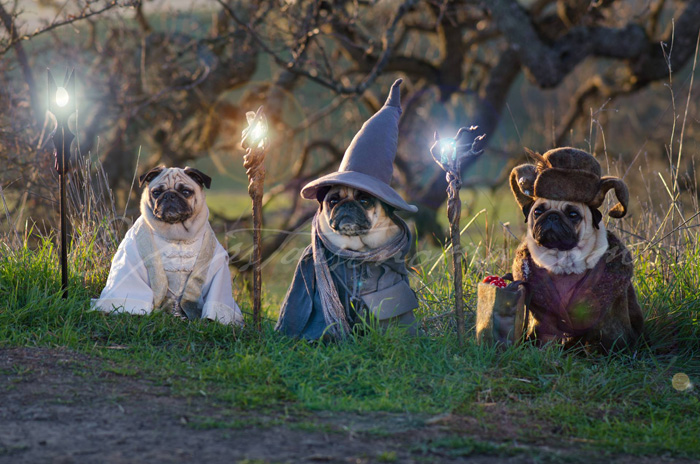





Artist: Pupstar Sonoma - website
Follow us on:
January 29 2016
If Tim Burton Directed Classic Disney Movies
If Tim Burton Directed Classic Disney Movies
Talented artist Andrew Tarusov drew this whimsical series of classic Disney movie posters in Tim Burton's signature style. He asks the question "What if Tim Burton directed all Disney classic movies?" and the results are just magical, I would watch all of these...
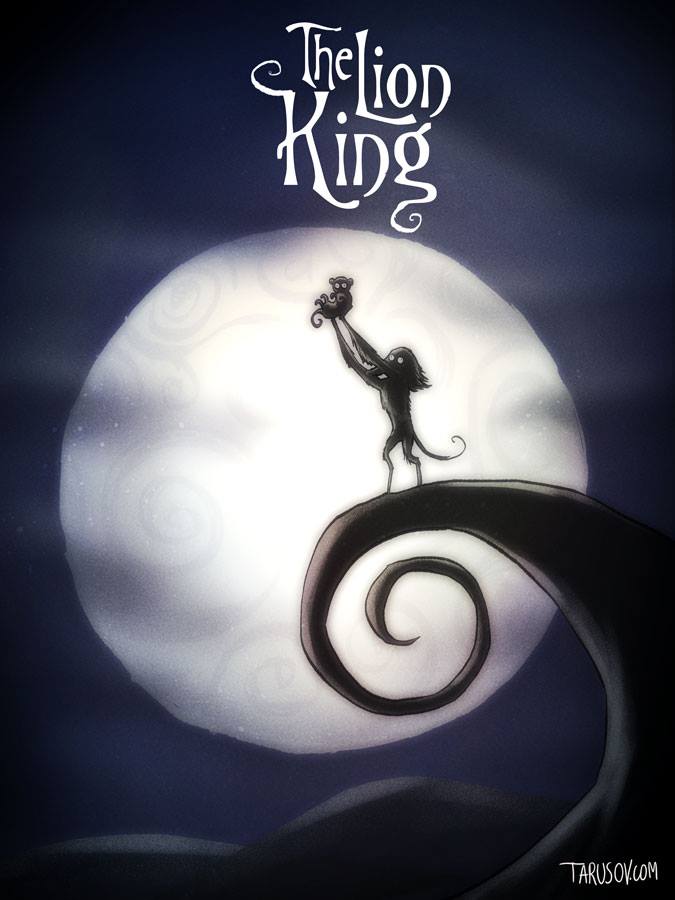
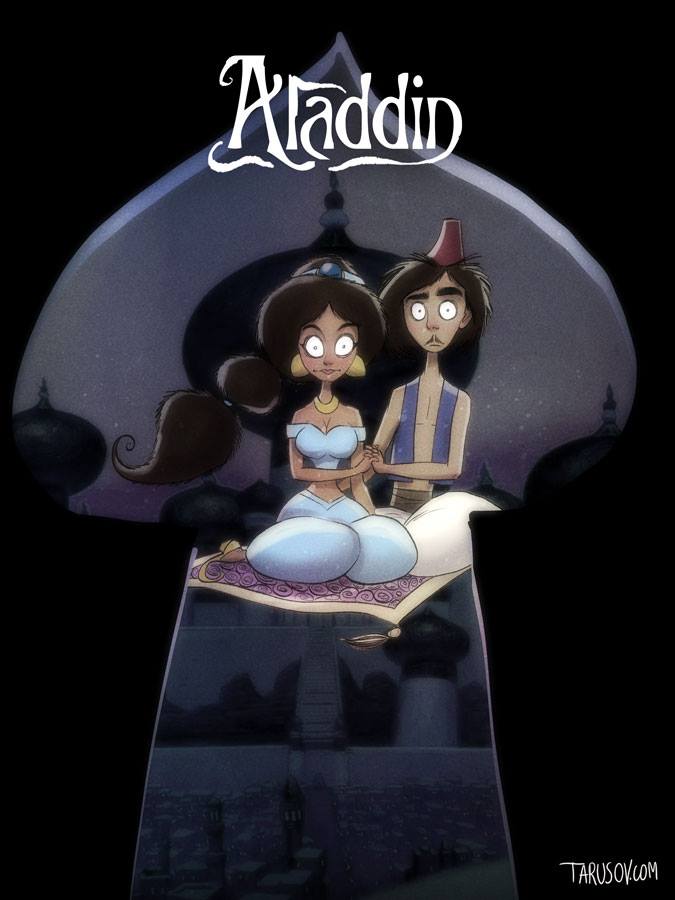
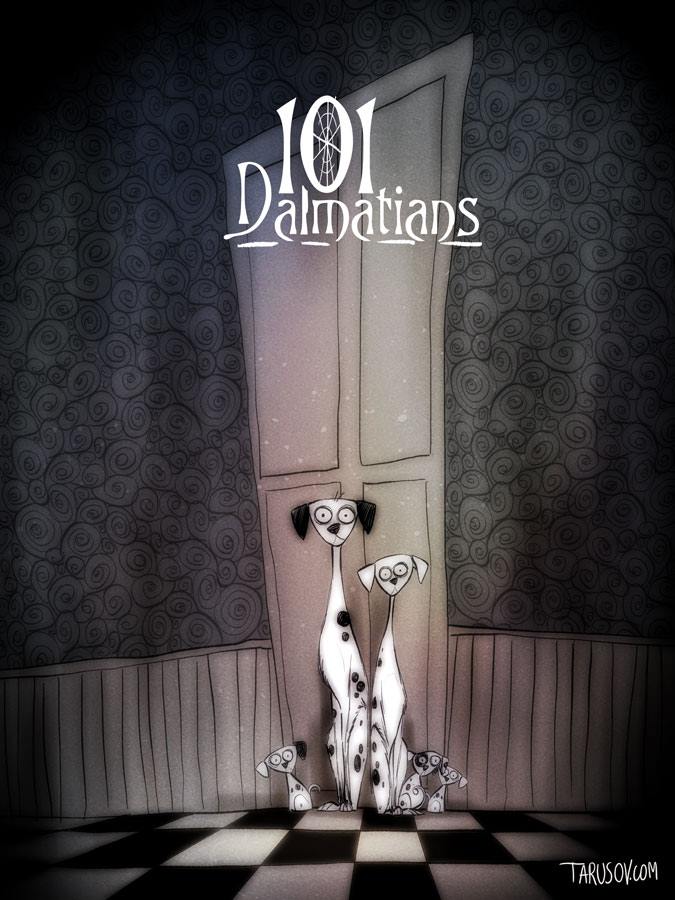
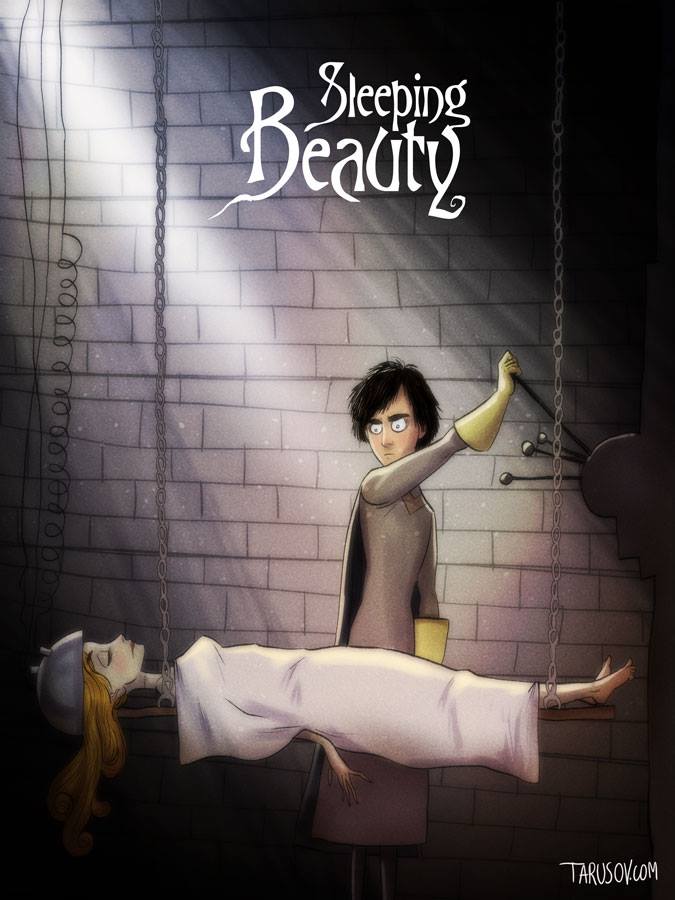
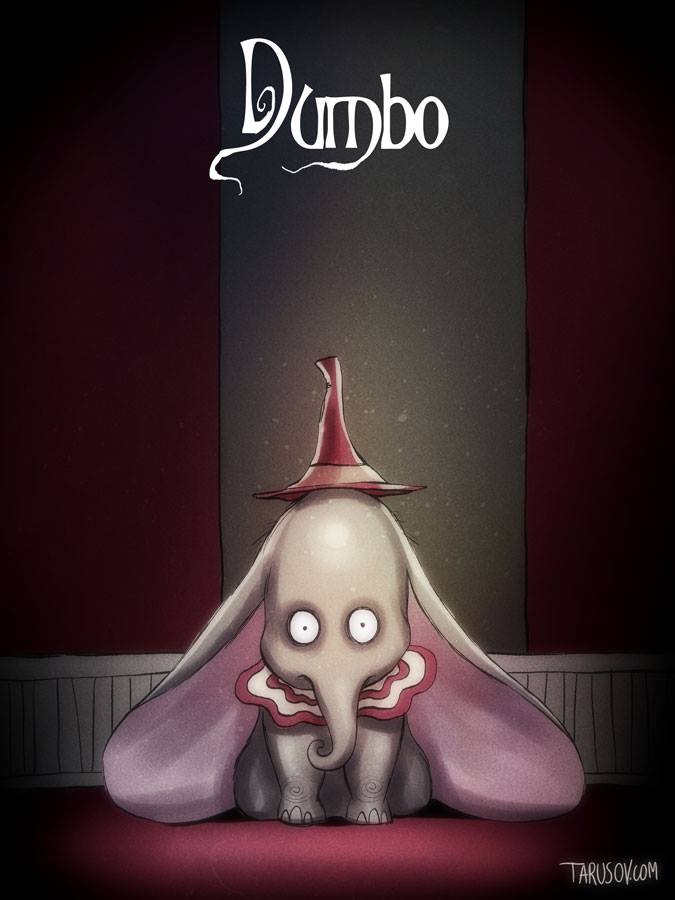
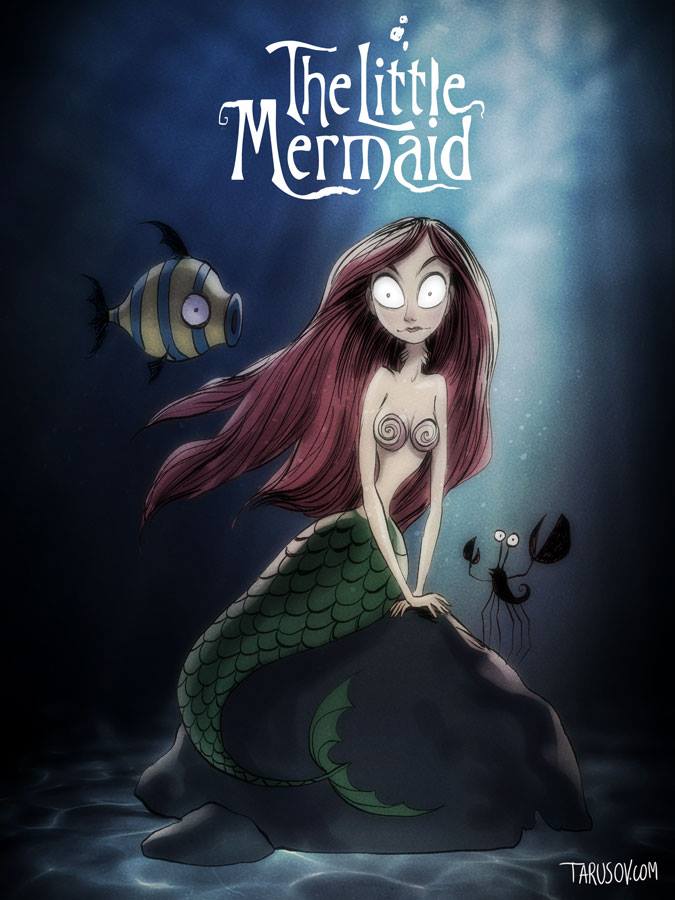
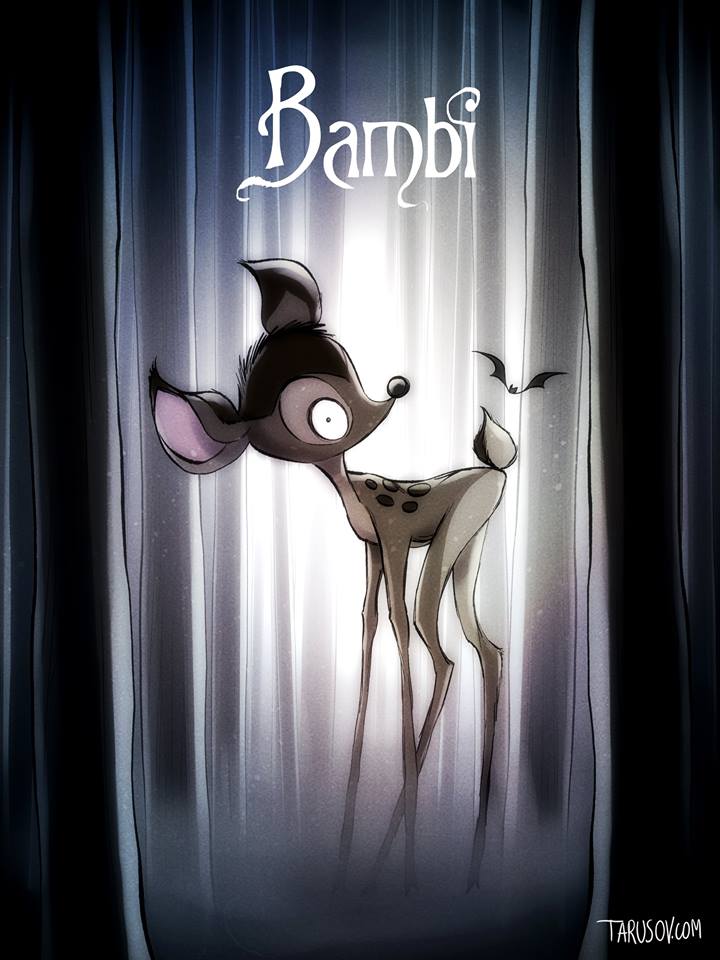
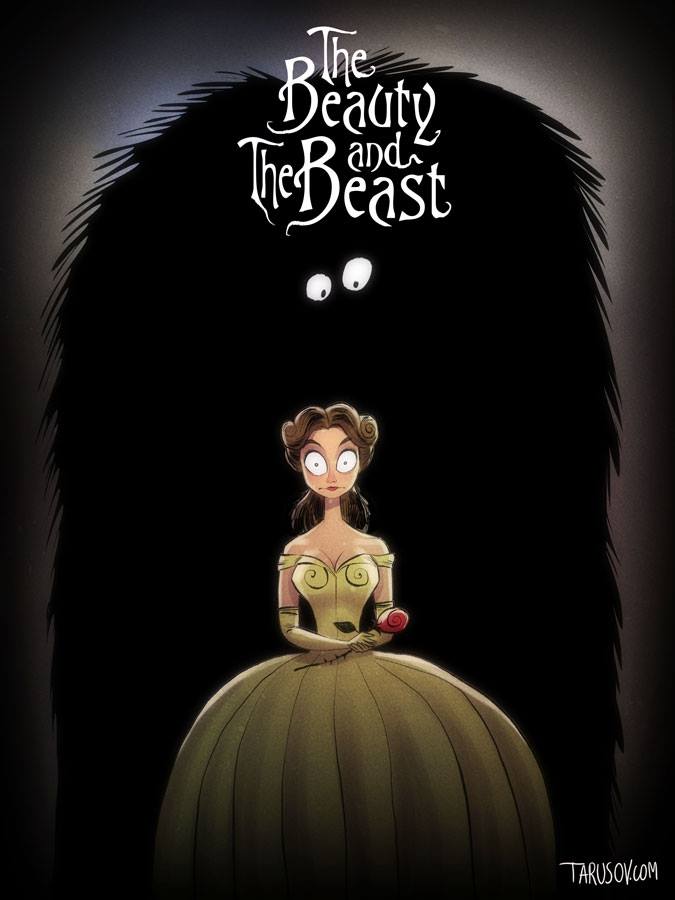
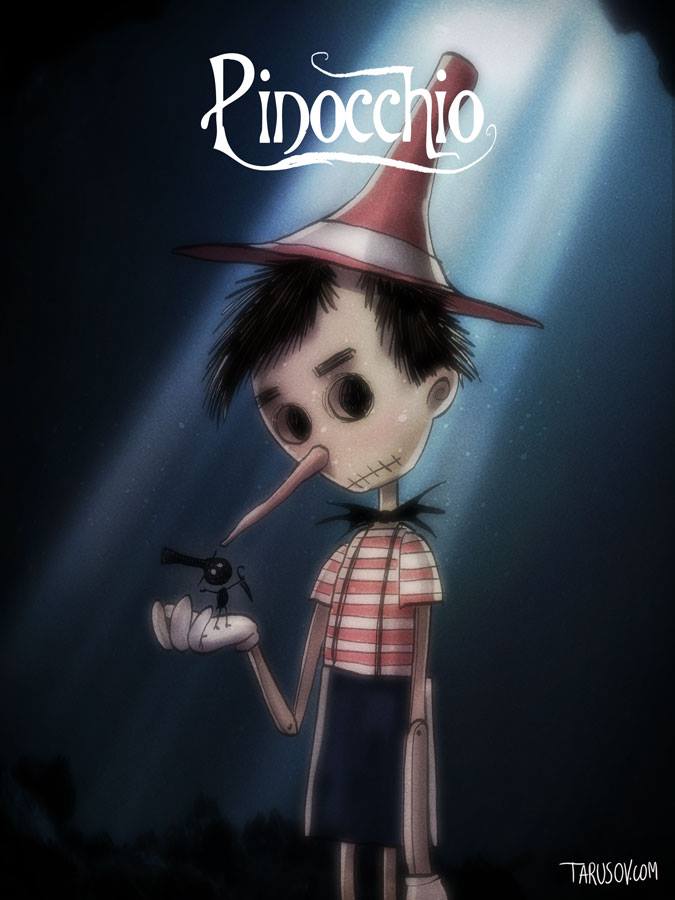
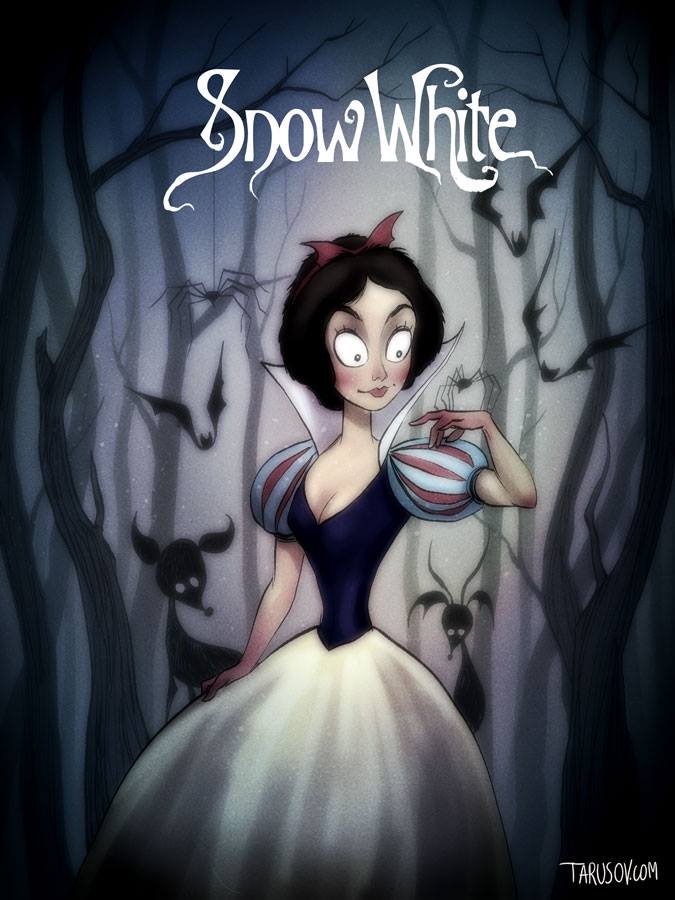
Support Tarusov's Patreon! Artist: Andrew Tarusov - facebook
Follow us on:
January 28 2016
Extending Sass with PostCSS
I think Ashley Nolan has the right idea here:
Many posts on PostCSS compare it’s features to Sass equivalents, but PostCSS doesn’t have to be used as an alternative to Sass. It can instead be used to add additional features to your workflow that Sass doesn’t provide. ... These extra tasks can run either before or after your Sass compilation, as PostCSS can parse both SCSS and CSS.
PostCSS has proven to be much easier for developers to write add-ons for. There are tons of add-ons that are highly compelling. But I think it would be a mistake to pick out, say, a dozen add-ons trying to replicate what what Sass already does, in addition to the others you find useful. Your CSS code base risks becoming this weird highly customized syntax - you'll be coding on an island so to speak. Not to mention at the mercy of untold third-party maintainers.
I think the trick is to use Sass (which has so many strong battle-tested syntax choices over the year) and sprinkle in PostCSS processing with good add-ons. Good, meaning actively maintained and that don't mess with the language. I prefer add-ons that have a familiar looking syntax, but it's invented, so it will never awkwardly conflict with current CSS, future CSS, or other preprocessing.
Direct Link to Article — Permalink
Extending Sass with PostCSS is a post from CSS-Tricks
Snowfall In Poland Transforms Statue Into Darth Vader
 SPOILER ALERT: Jakub Wejher, founder of Wejherowo, Poland in 1643, is actually Darth Vader.
SPOILER ALERT: Jakub Wejher, founder of Wejherowo, Poland in 1643, is actually Darth Vader.
Darth Wejher?
You may be thinking “Isn’t Vladimir Lenin the real Vader?“, but the truth is that his statue is just really into cosplay.
Check out more pics on Nerd Approved…
Jurassic Parkour [Video]

Despite his short arms, this T-Rex lives a pretty active lifestyle:
1. Here he is at the gym prepping for American Ninja Warrior.
3. Here he is running from a Jeep.
Now T-Rex is trying parkour. Just look at how graceful he is.
Check out the entire video below.
(via Reddit)
Google will shut down My Tracks on April 30
As one of the world’s largest software companies, Google understandably has a great deal of apps and services available. From time to time, however, the company does a cleanup and shuts down apps that are no longer a priority for the company. This generally happens each year in the spring, and Google’s first app to be killed off in 2016 is My Tracks.
My Tracks is an app aimed at those who enjoy outdoor activities, such as runners and hikers. The app allows users to track their speed, distance, elevation and location through GPS. The data could be saved for later and could also be shared to a service like Google Maps for use in plotting a route. Additionally, users could share their My Tracks data to social media.
My Tracks never garnered a large following and Google hasn’t done anything significant with it for quite some time. Now, Google has made the decision to shut down the app. The shutdown will occur on April 30, 2016, and users of the app will be greeted with a pop-up informing them of the news with an option to export their data to Google Drive or an external storage source.
Fortunately, there are plenty of alternatives out there that perform the same functions. Some suggestions are Runtastic, Endomondo, Map My Run and, to some extent, Google Fit. If you’re a My Tracks user, you may want to find one that you like and get into the habit of using it before My Tracks shuts down.
For instructions on exporting your My Tracks data, follow the source link below.
‘The Michael Jackson Video Game Conspiracy’ from The Michael Jackson Video Game Conspiracy
One evening early in 1993, Michael Jackson hobbled into the Sega Technical Institute in Palo Alto for a visit.
Late one afternoon, Roger Hector got a call: Jackson would be coming to visit Sega. “He wanted to drop by and say hello,” Hector recalls. “There was no agenda beyond it other than, he really, really liked the game. He enjoyed playing it a lot and he wanted to meet the people behind it.”
Then, as Hector tells it, one of the Sonic 3 developers asked whether Jackson would like to write the music for the new game.
What happened next is still in dispute.
Sega maintains it never worked with Jackson on Sonic 3, and is “not in the position to respond” to questions about allegations to the contrary. “We have nothing to comment on the case,” the company said.
But the men whom Sega credited with writing the music say otherwise. Six men – Brad Buxer, Bobby Brooks, Doug Grigsby III, Darryl Ross, Geoff Grace and Cirocco Jones – are listed as songwriters in Sonic 3’s endgame scroll. Buxer, Grigsby and Jones tell The Huffington Post that Jackson worked with them on a soundtrack for Sonic 3 – and that the music they created with Jackson ended up in the final product.
An important PSA from our favorite merc with the mouth.(via...
An important PSA from our favorite merc with the mouth.
FREE Rihanna Anti Album Download
Dan JonesShe's releasing her entire new album for free? Wow!
FREE Rihanna Anti Album Download
The post FREE Rihanna Anti Album Download appeared first on SweetFreeStuff.com.
Electric Shoe & Boot Dryer & Warmer

He may not get as much press as Dr. Love, but at this time of year you might find an appointment with Dr. Dry just as valuable. His electric inserts slip into cold, wet shoes and boots, using a built-in PTC heater to safely warm and dry them in 3 to 4 hours*.
In addition to absorbing rain, snow, and muck moisture, Dr. Dry shoe and boot warmers dehumidify and deodorize while in use. You can also insert them into gloves, liners, and ski masks to achieve the same effects. Heat output is preset so once dryers are in place, all you need to do is plug them in and leave them to their duties. Dr. Dry is also up for overnight shifts, ensuring you'll wake up to and walk out the door with toes as toasty as they were under the covers.
Dr. Dry shoe and boot warmers are available in Kids', Women's, and Men's sizes.
*Sopping wet footwear might take up to 12 hours.
T-Mobile adds four new services to Binge On, continues to defend it
T-Mobile is known for making controversial moves, but one that’s been garnering quite a bit of attention is Binge On. Binge On is T-Mobile’s program that allows customers to stream video from select sources without chewing into data allotments.
Today, T-Mobile announced that it’s adding four new service to Binge On. These video services include Amazon Video, Fox News, Univision NOW and WWE Network. Streaming video from these services will no longer impact data allotments.
Binge One has ruffled some feathers, however. One issue is that T-Mobile works to prevent network clogs by lowering the streaming quality of video services, even if they aren’t a part of Binge One. For example, Google found that T-Mobile was lowering the quality of YouTube streaming, even though YouTube isn’t a part of Binge On. To help avoid the negative impact, T-Mobile has introduced simple short codes to allow users to toggle whether Binge On is active or not. As such, users can enter a short code into their dialer to toggle the service on and off.
Here’s a list of the new short codes to change settings:
- #BNG# (#264#) and hit send to check your Binge On settings
- #BOF# (#263#) to toggle Binge On off
- #BON# (#266#) to toggle Binge On on
The larger issue at hand is the threat that Binge On poses to net neutrality. T-Mobile has raised eyebrows on net neutrality before with services like Music Freedom, but Binge On continues the company’s trend. The company has drawn flack for its controversial moves against net neutrality, but as of right now, it doesn’t appear as though it’s planning to make any changes to its game plan.
Check out the source link below for more information on Binge On.
New Suicide Squad Official Trailer
New Suicide Squad Official Trailer
ZOMG the latest official full length trailer for Suicide Squad is here (you can see the first trailer from comic-con here)! It looks pretty badass and hits theaters on August 5, 2016. What do you think?
Fastest Bikes in Pop Culture History
Fastest Bikes in Pop Culture History
EVELO.com made this awesome infographic that ranks the fastest bikes and motorcycles from pop culture!
From Batman?s Batpod to Maverick?s bike in Top Gun, all kinds of bikes and motorcycles have had memorable roles in pop culture. Riding a two-wheeler is undoubtedly fun, and fun to watch in films too. We?ve gathered some of the most iconic bicycles in pop culture and ranked them to see which were the fastest.
The first bike is one that Elliot & E.T. ride, which is the slowest on the list, but boy could that thing fly! A bit further down, you?ll find the Batpod, which is actually the escape pod integrated into Batman?s Tumbler vehicle that still manages to reach 100 MPH. If you want to get a little further away from the real world and into virtual reality, the Light Cycles in Tron can hit a blazing 144 MPH. You?ll even find one below that?s so fast it leaves behind a trail of fire!

Source: EVELO.com
Follow us on:
January 28 2016
The Spite House, An Architectural Phenomenon Built On Rage And Revenge

The Old Spite House in Marblehead, Massachusetts, was constructed in 1715 by Robert Wood for the Graves brothers, who were quarreling fishermen. (1912 postcard) (via Wikimedia)
Spite houses are homes built on anger. They are typically designed to block a neighbor’s view or sunlight, often with walls aggressively grazing property lines. Whatever their shape, these are structures meant to provoke. A pink house stranded out in a Massachusetts marsh is said to be an exact duplicate of a divorced couple’s home, erected to fulfill a final agreement, with only saltwater running in its pipes. A claustrophobically narrow house in Virginia was constructed only to block public access to an alleyway.
Spite houses can be found around the world — the 1936 Kavanagh Building in Buenos Aires, for example, supposedly achieved its then-status as the tallest skyscraper in Latin America in order to block the church view of a rich family that rejected their son’s marriage to a less wealthy woman. However, something about the US spirit for private property, for claiming what land you can and keeping strangers off your lawn, seems to have led to a concentration of them in the United States.
In the town where I grew up in Oklahoma, I remember an antique store lodged in an old house that was painted bright pink. The Pepto-Bismol hue riled the neighbors, and the house was eventually whitewashed, but its interior held an enduring act of spite: all the walls were painted the offending shade of pink. Similar to holdout buildings, like the nail houses of China whose owners refused to make way for development, spite houses are acts of protest. Just as Edith Macefield’s petite home in Seattle, which she refused to sell to developers, is now encircled by a massive commercial building (and threatened by demolition), the houses are statements of their owners’ defiance.

Edith Macefield’s house in Seattle in 2012 (photo by Payton Chung/Flickr)
Last month, Kate Bolick wrote about the haunting Pink House on Plum Island in Newburyport, Massachusetts, for the New York Times. The house appeared on a forlorn marsh in 1925 when “a wife agreed to divorce her husband on the condition he build her an exact duplicate of the home they shared in town.” He grimly held his end of the bargain, but had the copy designed like a readymade ghost of their lost relationship, with no fresh water, just salt, available from its taps. There’s a grassroots campaign underway to protect the Pink House, which is now something of a local icon and threatened by demolition under its ownership by the US Fish and Wildlife Service.

The Pink House of Plum Island, Massachusetts, in 2013 (photo by Lee Wright/Flickr)

A Snowy Owl on the Pink House in 2014 (photo by Alex1961/Flickr)
Bolick’s Pink House article inspired Patrick Sisson at Curbed to round up some of the most famous spite houses, such as the 10-foot-wide Skinny House in Boston, dating to the 19th century, when one brother supposedly build a huge house on the family land, prompting the other brother to add his own tiny house and mask the view.
There’s also a rainbow-painted house in Topeka, Kansas, right across from the homophobic Westboro Baptist Church, a house striped like a candy cane in a wealthy London neighborhood in reaction to its owner’s renovation plans being shot down by neighbors (although the paint was ordered removed by the Kensington and Chelsea Council last year), and the seven-foot-wide Spite House of Alexandria, Virginia, built by John Hollensbury to keep people out of his alley (according to the New York Times, the living room has the alleyway’s brick walls, which have holes still visible from the hubs of wagon wheels).

The Skinny House of Boston, viewed through the Copp’s Hill Burying Ground (photo by John Stephen Dwyer/Wikimedia)
Generally, the aim of these homes’ builders was not habitation, as is the case with the 1815 Tyler Spite House in Frederick, Maryland, built by Dr. John Tyler to stop a road from being built through his property. According to the Los Angeles Times, when he found a local law that could stop the street if there was a big building project, he had a foundation put in place overnight and it was discovered by a befuddled construction crew the next morning. The road still stops abruptly at the house’s doorstep.

The Tyler Spite House in Frederick, Maryland, built to stop the construction of a road (photo by Thisisbossi/Wikimedia)
New York City once had an infamous spite house at 82nd Street and Lexington Avenue. The 1882 Richardson Spite House came to be when Joseph Richardson was insulted by a neighbor’s meager offer for his land. He reportedly proclaimed: “I shall build me a couple of tall houses on the little strip which will bar the light from Sarner’s windows overlooking my land, and he’ll find he would have profited had he paid me the $5,000.” It was finally torn down after a 1915 sale (Daytonian in Manhattan has a thorough recap of the lost building’s history).

The Richardson Spite House demolished in 1915, which once stood at Lexington Avenue and 82nd Street (1915) (via Wikimedia)
There are numerous other examples, like the Cake House in Gaylordsville, which resembles a precarious tower of houses growing smaller and smaller until its top. Legend has it that it was built in protest of the owner’s foster daughter’s baby being taken away by the state. Much like the belated Broken Angel in Brooklyn, its unconventional form is an architectural provocation against the homes around it.

Cake House in Gaylordsville, Connecticut (photo by Bruce Berrien/Flickr)
There are also commercial spite houses, like the twin wooden Irish Hills Towers in Cambridge Township, Michigan. Although they’re attached now (and in a vulnerable situation due to a proposed demolition), the two observation towers were built separately. One was constructed in 1924 by the Michigan Observation Company, the other by a farmer who owned the other half of the bluff. The both kept building higher, one called “Original Irish Hills Tower,” the other “Gray Tower.” The nearly conjoined rivals were only connected by a new owner in the 1950s.

The Irish Hills Towers in Michigan in 2007 (photo by Angela/Flickr)

View of the Irish Hill Towers in 1949, showing one as the “Original Irish Hills Tower,” and the rival as the “Gray Tower” (via Wystan/Flickr)
City ordinances on light access and fire regulations for such narrow buildings mean spite houses can’t be built as easily today, and those that survive face preservation issues. Last year, a late 19th-century spite wall — a huge swoop of stone on a Wicker Park greystone in Chicago hiding the Victorian home from a hated neighbor — was removed. It can be hard to love houses built on hate, whose designs were guided by rage. Yet these are unique acts of architecture, reminders that a home is after all a symbol of its occupant’s place in the world, and these represent the legacies of people who refused to settle for the status quo.

A “spite house” that’s 11 feet wide, built in 1926, in Georgetown, Washington, DC (photo by AgnosticPreachersKid/Wikimedia)

The 1920s Montlake Spite House in Seattle, supposedly built in a divorce, although another story has it that it was built by a warring neighbor (photo by Joe Mabel/Wikimedia)

The Spite House of Alameda, California, that is 10 feet wide, built as a protest against city development (photo by Elf/Wikimedia)

Closer view of the Alameda Spite House in 2008 (photo by Lisle Boomer/Flickr)

The eight-foot-wide O’Reilly Spite House in Cambridge, Massachusetts, built in 1908 when Francis O’Reilly didn’t get the price he wanted from his neighbor for the land (photo by Arnold Reinhold/Wikimedia)

A home said to be a spite house in Georgetown, Washington, DC, in 2013 (photo by Eric Fischer/Flickr)
Cross-pollinated comics
Dan JonesThe Batman as a Peanuts character is fantastic.

Artist Jaakko Seppälä drew 10 of his favorite comic characters in each other's distinctive styles, e.g. Lucy van Pelt in the style of Calvin and Hobbes or Garfield in the style of Donald Duck.
Update: See also the Great Comic Switcheroo of 1997, where a bunch of comic authors drew each others' comics for a day. (via @craigpatik)
Tags: art Jaakko Seppala remixWoman Accidentally Cosplays A Hotel

So my friend checked into a random hotel, and then this happened
She accidentally nailed that hotel cosplay is what happened.
(via Reddit)
You’ll Go Insane Over This LEGO Recreation Of Batman’s Arkham Asylum
Dan JonesExcellent
 Batman and LEGO are two great tastes that taste great together. And now an Australian LEGO fan has recreated Gotham City’s Arkham Asylum entirely out of LEGO bricks.
Batman and LEGO are two great tastes that taste great together. And now an Australian LEGO fan has recreated Gotham City’s Arkham Asylum entirely out of LEGO bricks.
Built from approximately 18,000 bricks, Dayton (aka Forgotten Days on Flickr) spent years designing this masterpiece and had to specially order bricks in. It took three months to finish construction in time for Brickvention, an Australian LEGO convention.
The attention to detail in this recreation is magnificent, and you can check it out in photos, as well as a walkthrough video on Nerd Approved…
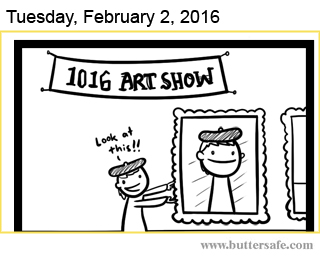









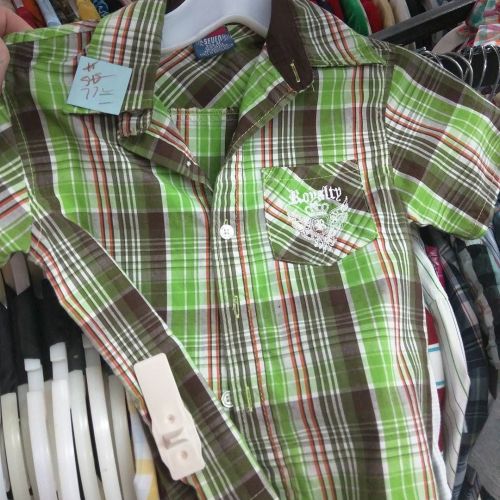






 I am Great Deku Tree!
I am Great Deku Tree!